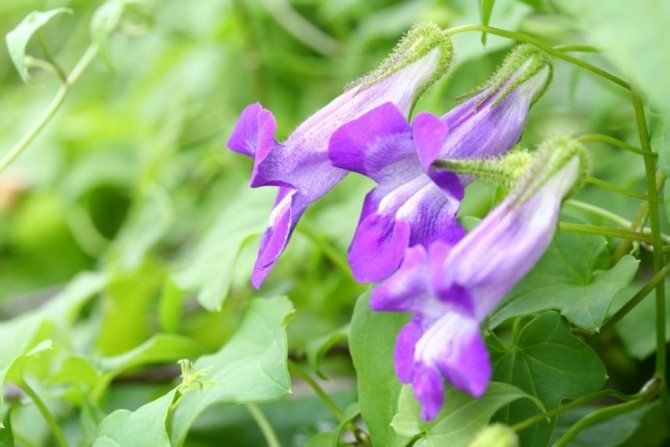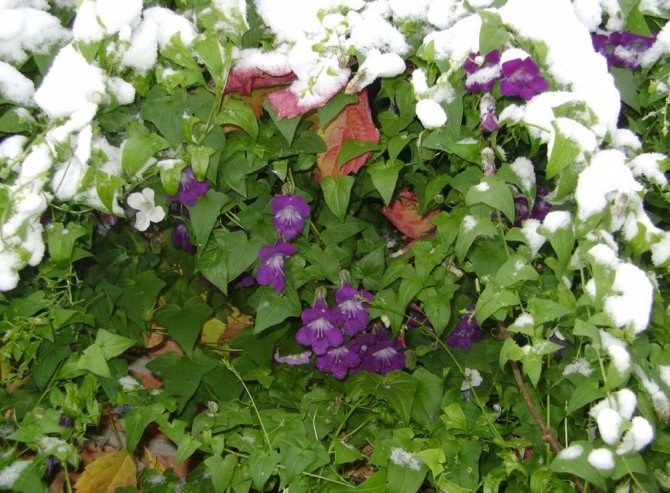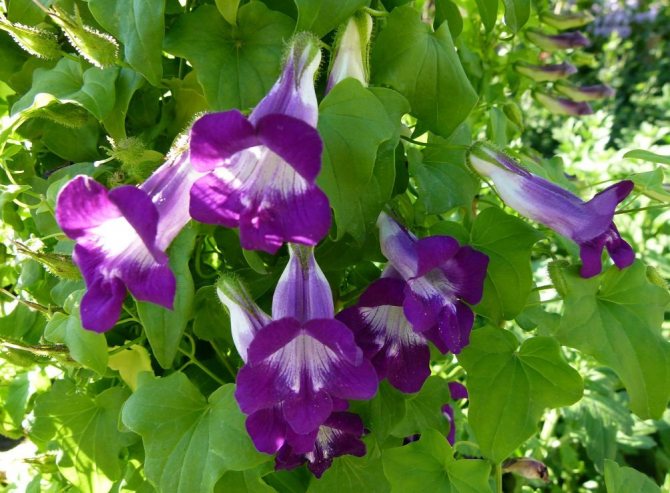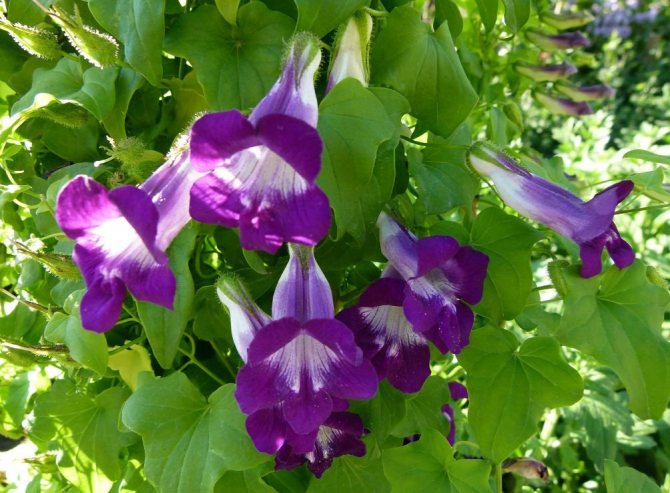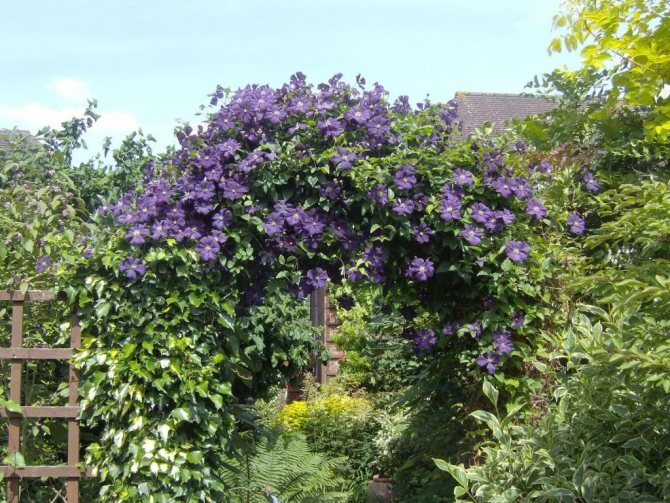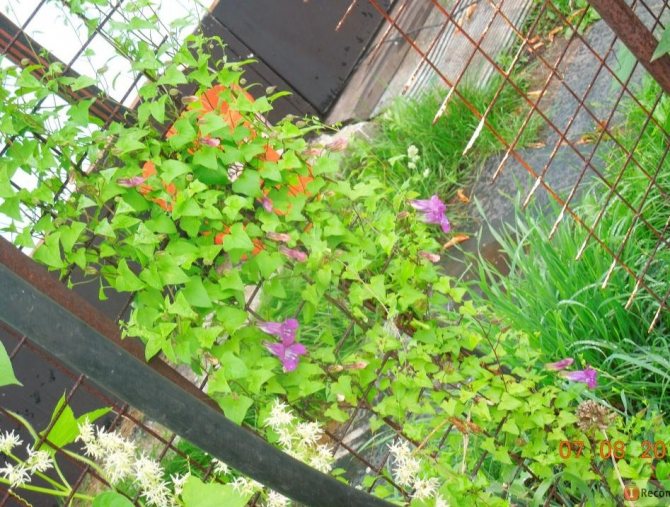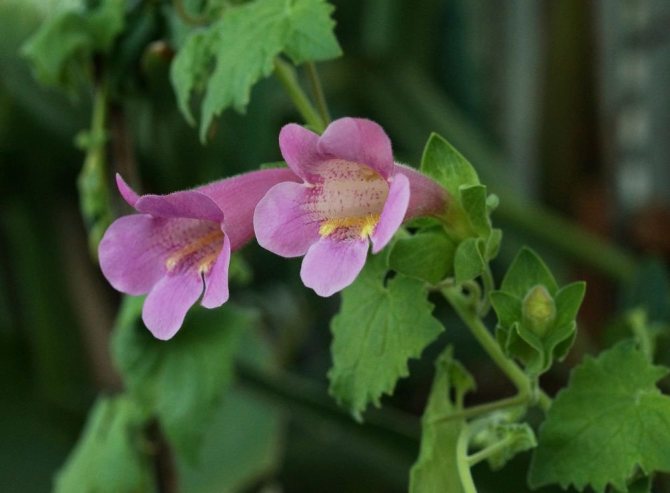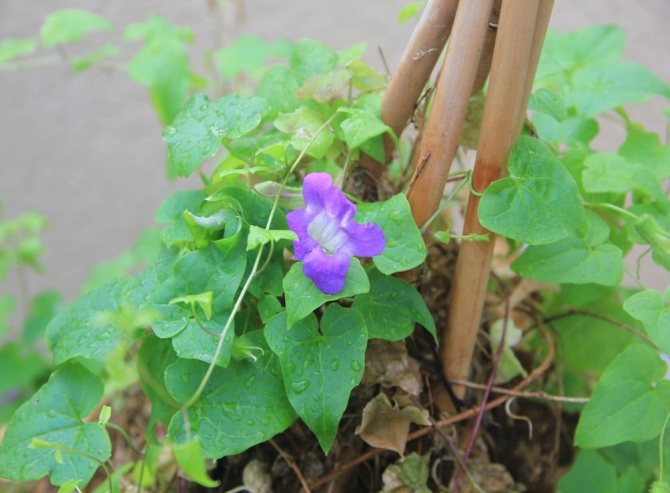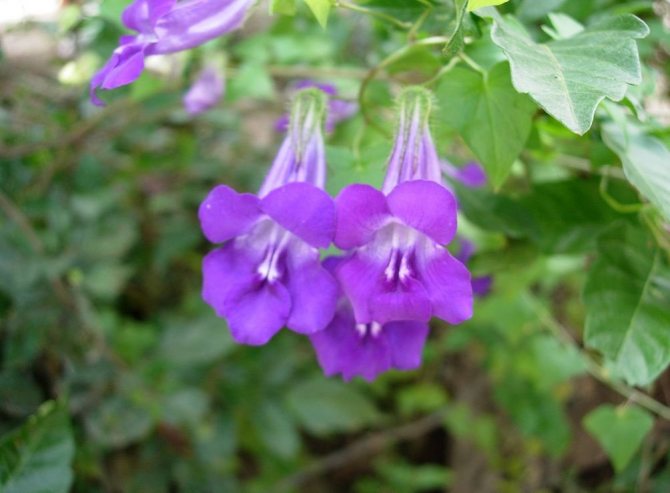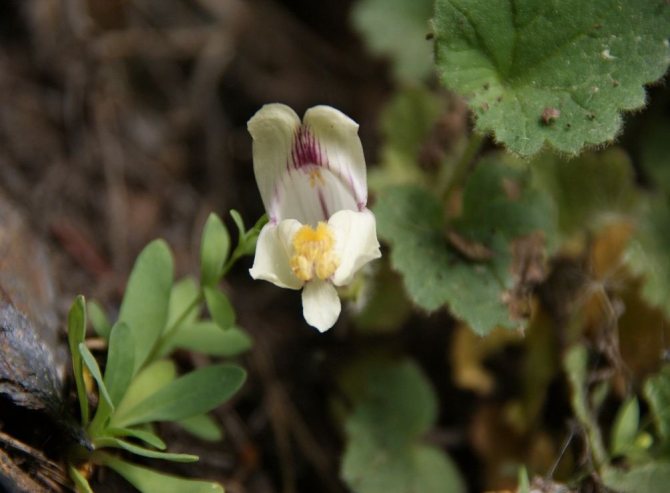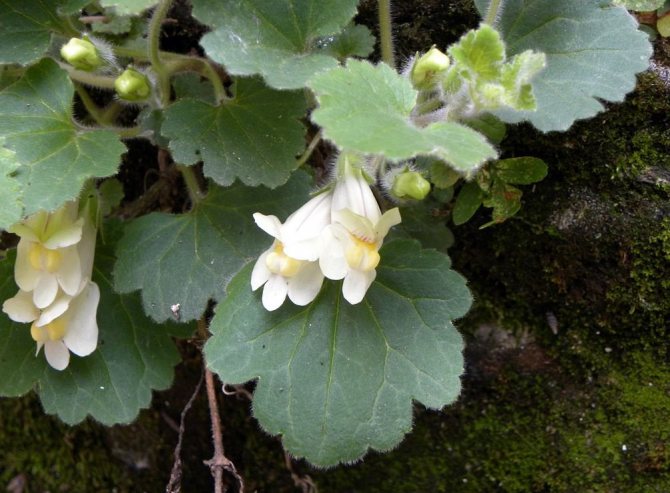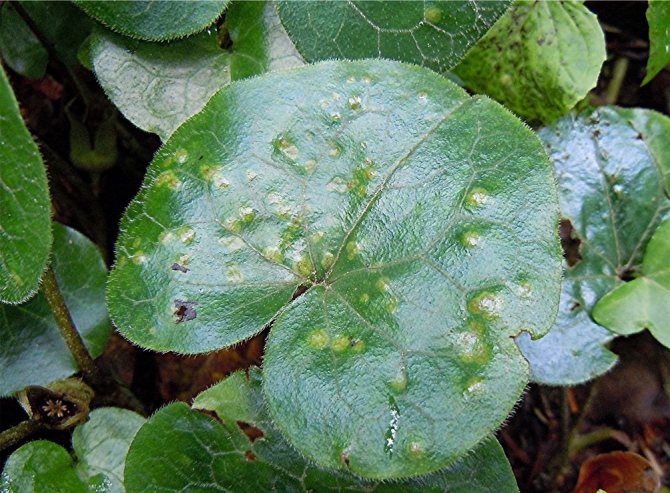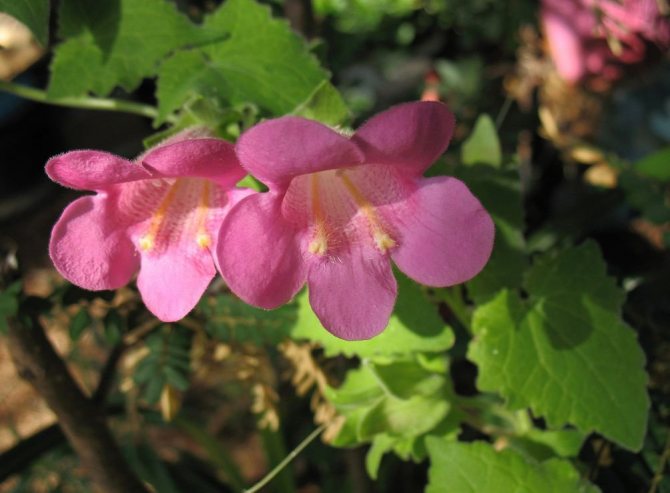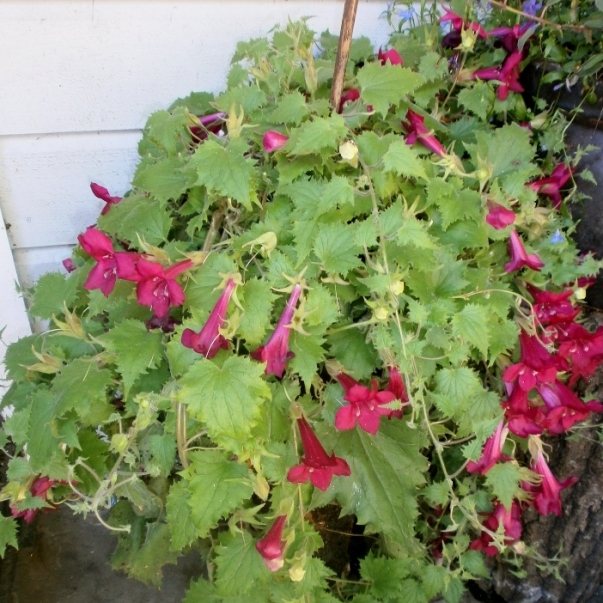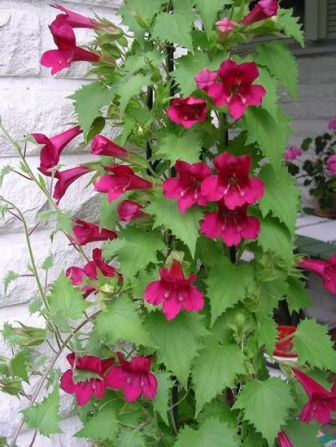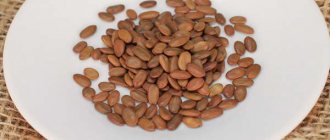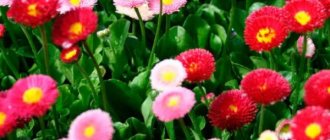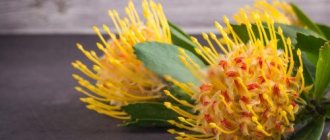Azarina climbing is still a rare guest in our gardens, and few know about her. Meanwhile, this decorative liana can become a real decoration of any personal plot. Its thin shoots grow very quickly, and the dense decorative foliage forms a dense emerald carpet, strewn with graceful large flowers. Asarina is most effective in vertical gardening, but also looks great as a ground cover plant. How to grow such a beauty from seeds at home?
Azarina climbing: photo
Description of asarin, varietal variety
To decorate gazebos, arches, terraces, you can use the asarina climbing or maurandia, which is still little known to gardeners. This vine was first seen in Mexico. In the wild of a tropical climate, it is a perennial herbaceous ampelous plant. Asarin leaves are heart-shaped, round and lanceolate, slightly pubescent and not pubescent. Flowers are five-petalled tubular. Corolla petals are painted in different colors:
- white;
- light pink;
- bright pink;
- lilac;
- red;
- purple;
- purple.
The photo shows different varieties of lianas with different colors of petals. Azarina can release shoots up to 5 meters or more. It does not have antennae, like many lianas, it does not twine around the support with a stem, asarina has long leaf stalks that wrap around the support.
In temperate climates, several varieties of asarin are grown:
- Azarina climbing
can grow up to 3 m. Shoots are thin, leaves and flowers are small. The color of the petals is white, blue, pink, lilac. Most often in the gardens you can see this particular variety of Maurandia. - Shoots grow from 2 to 3 m azarin reddish
... It got its name for the color of the petals, bright red. The size of the leaves and flowers is greater than that of the climbing maurandia. It begins to bloom in June and ends in mid-autumn. - For decorating balconies, for planting in the most suitable variety maurandia antirrino-flowered
, the shoots of which grow only 1, 5 m. Small flowers have a purple color, leaves in the shape of a heart. - For landscaping terraces, gazebos, for the most suitable Asarin Barclay
, the stem of which can reach 3.5 m. Barclay's azalea is popular with gardeners because of its large flowers (up to 7 cm) and leaves. They love her for long flowering before the onset of the first frosts. - Landings asarinas prostrate
or curly gloxinia is used in rockeries, rock gardens. Gloxinia curly has dark green leaves, white flowers with a yellow heart. It can withstand light frost.
Description of the plant
Azarina is a perennial, climbing liana. Its thin, branched stems grow 3-5 m in length. In the natural environment, flexible shoots can grow up to 7 m in length. In central Russia, the flower is grown as an annual, since it practically does not tolerate frost. Shoots are covered with alternate heart-shaped petiole leaves. The emerald-colored triple leaf plates have beautifully carved sides. Leaves and young shoots are often covered with a short, dense pile. The asarin has no mustache; it clings to the support with long flexible leaf stalks. Therefore, during the growth process, the plant must be guided.
In mid-June, large tubular flowers bloom in the leaf axils. They are located singly or collected in small racemose inflorescences. The petals can be white, pink, blue or purple. The diameter of the corolla is 3-6 cm, the length of the tube is 5-7 cm. From the inside, the narrow tube is colored in lighter shades (white, cream). But the petals strongly bent outward are distinguished by bright saturated colors.
From September, the fruits begin to ripen - dry seed pods of a round shape. They contain small, dusty seeds. Ripe fruits crack, and the wind carries the seeds over long distances.
Features of seed reproduction, types of fertilizers, frequency of feeding
Maurandia propagates by seed and cuttings. Seed propagation is used for indoor and outdoor cultivation. The difference in the timing of sowing seeds. For growing at home, seeds are sown in spring in April, for open ground - in winter or early spring. Loose soil is suitable for sowing seeds. For seed propagation, the soil can be prepared by yourself:
- sand;
- peat;
- humus;
- leafy land;
- sod land.
Soak the seeds in a potassium permanganate solution before sowing. Moisten the soil with water. Then sprinkle the seeds, you do not need to cover with soil. You can cover the seeds a little with calcined sand on top. The container must be covered with glass or foil and placed in a sunny place. It is necessary to remove the cover every day for ventilation.
Advice. Asarina seedlings are thin and fragile; when transplanting, the seedlings can be damaged. Therefore, do not throw in a lot of seeds.
The first shoots will appear in 10-14 days. Some refuse to grow maurandia due to the fact that they cannot wait for the shoots. It happens sometimes. For better germination, place the box with crops in the cold for a month, then place in a well-lit and warm place. This "shake-up" promotes rapid seed germination. Dive the hardened seedlings and transplant them into separate pots or flowerpots.
Advice. Use cardboard cups or peat pots for asarin seedlings so that the root system will not be damaged when transplanted into open ground.
The first feeding is carried out in two weeks, you can use the fertilizer "Ideal". After another two weeks, apply Agricola fertilizer or similar. When fertilizing, carefully examine the condition of the plant. If the leaves are small, have a pale color, then there is not enough nitrogenous fertilizers. If the leaves are bright green, but the shoots are growing slowly, feed the seedling with phosphorus or potassium fertilizer.
Secrets and nuances of seed germination
Despite the good germination of asarin seeds, inexperienced gardeners may not be able to grow it right away. Therefore, many experts advise, put the container with seeds in a cool place without sunlight, and return it back in a month.
Soil requirement
Not demanding on soils, but prefers leafy soil with sand and a small amount of humus. The substrate should be loose, not obstructing air access and contain the required amount of drainage.
Seed preparation
The seeds do not need special preparation, however, it is better to soak the grains in a special agent or in a solution of potassium permanganate before planting. This is required for the prevention of fungal diseases, namely the black leg.
Features of care, frequency of watering
Azarina does not like the cold, therefore, they are planted in open ground when the heat comes. For maurandia to bloom profusely, choose a flower bed on the south or east side for planting. Before planting, loosen the soil, add peat (if the soil is dense), lay drainage at the bottom of the hole.The first days after planting, it is necessary to cover the seedlings so that they get used to direct sunlight. Experienced gardeners know that any seedlings must be "hardened". Plant care in the open field is not difficult:
- loosen the soil;
- remove weeds;
- fertilize.
Attention! For bushiness and the formation of a larger number of shoots, and the investigator and more abundant flowering, it is necessary to pinch the tops of the shoots.
Watering is carried out depending on natural conditions. Until the roots are firm, you need to water often and little by little. With prolonged drought, watering is carried out twice a day: in the morning and in the evening. The water should be warm and filtered.
Asarin care


Asarina climbing care
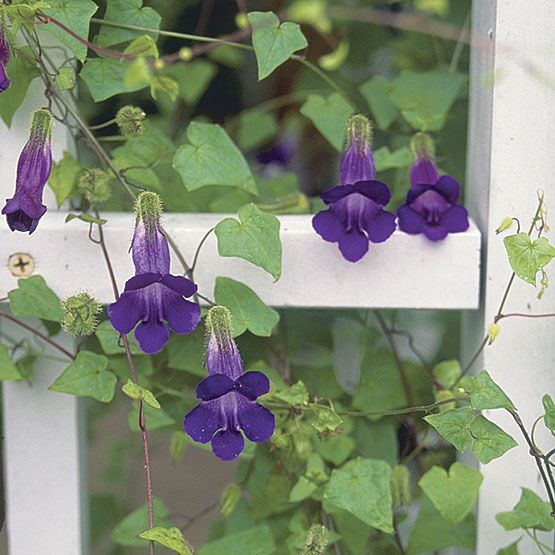

Asarina climbing flowers need support
First of all, you need to immediately establish a support along which the shoots will trail. This will make it easier to form and care for the bush. As a support, metal and wooden lattices, as well as grids with large meshes, are very convenient.
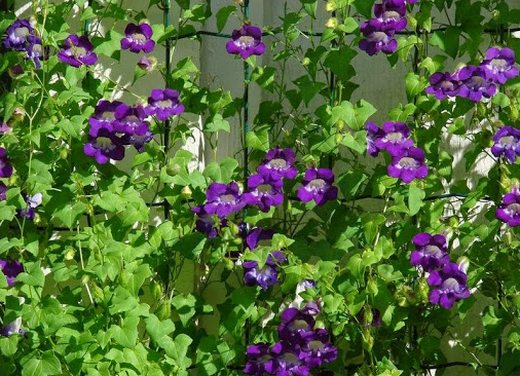

Azarina on a mesh support
Despite the abundance of green mass, the shoots of the bush are not heavy, so the supports can be taken quite thin. In the heat, the liana needs light shading, direct sunlight leaves burns on the leaves. If the outside is very hot and drought, watering should be twice a day - early in the morning and after sunset. Additionally, in the evenings, it is recommended to spray the bushes with warm, settled water. Periodically, the bushes require sanitary pruning.
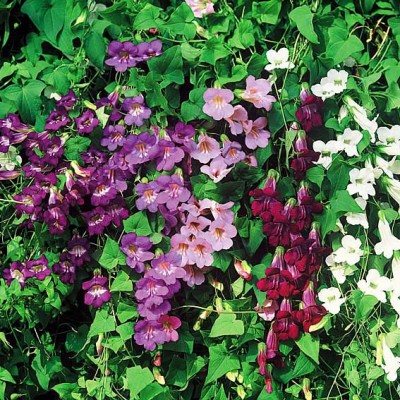

Periodically, the whips need to be trimmed.
Azarina climbing has good disease resistance, but it is often affected by aphids. The most effective means of dealing with this pest is spraying the shoots with an infusion of garlic, onion husks with needles or tansy, which any florist can prepare on their own.


Plants against garden pests
If you want to move the plant from the flower bed to the house, you need to cut the shoots to 40-60 cm, remove all weak and damaged stems, and then carefully dig the roots out of the ground. This should be done at the end of October or a little earlier, depending on weather conditions. The roots, together with an earthen clod, are transferred into a spacious container, at the bottom of which drainage is laid, and sprinkled with fresh soil. After that, the bush is well watered and the container is placed somewhere in the house in the light, away from heating appliances and batteries.
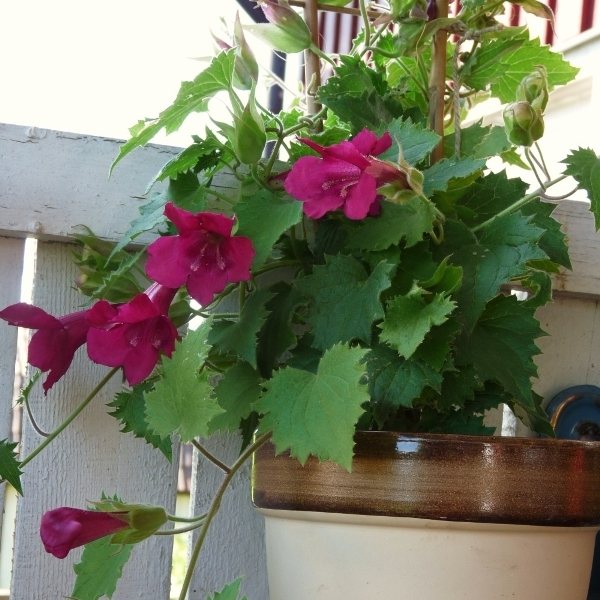

Azarina climbing in pots
As a rule, in the apartment the growth of asarina slows down, the leaves become smaller, and the flowering does not occur as abundantly and for a long time as in the open air. And yet, the plant looks attractive, fresh, winds beautifully upwards along the supports. When you take it outside in the spring, the bush will quickly begin to form young shoots and grow. Just remember to feed and water it regularly in winter.
Most popular varieties
| Name | Description of the variety |
| Bridge's White | The leaves are small, dark green in color, slightly pubescent, with jagged edges. White flowers are tubular, about 3 cm long.The shoots are usually 3 m long |
| The leaves are green, large, like ivy leaves. The flowers are horn-shaped, elongated, pink at the receptacle, violet-red from the middle to the edges. Grows up to 3-3.5 m |
| SkyBlue | Very decorative variety. Leaves are heart-shaped, rich green hue. The flowers are larger than those of other varieties, the upper petals are azure blue, the lower ones are blue, the core is white. Shoot length from 4 to 5 m |
| The leaves are smooth, green, with small notches along the edge. Tubular flowers have a rich pink color of the petals and a light core. Grows up to 4 m |
Propagation by cuttings, use in landscape design
Maurandia can be propagated by cuttings. When pruning shoots, do not discard the cuttings. Put them in water, after a while the asarina will take root. It remains only to plant in pots.The composition of the soil is the same as when sowing seeds.
Of the diseases, the "black leg" is a particular danger. For prevention, seeds and soil are treated with a solution of potassium permanganate. Copper sulfate is used for treatment. Aphids can harm the plant. You can get rid of it with proven folk remedies:
- spray with onion peel infusion;
- infusion of garlic;
- infusion of marigold flowers.
If the aphid does not leave the plant, chemical preparations can be applied.
Blooming asarina resembles a fabulous plant. It is perfect for decorating arches, arbors. The main thing is to find a reliable support for the shoots. A metal or plastic mesh is suitable for this. Different varieties of asarin are perfectly combined. Plant several different varieties along the fence, you get not just a living, but a flowering hedge.
You can plant a vine on the balcony, and then the flowering shoots will fall like a multi-colored waterfall. Azarina does not need to be supplemented with other plants, it is self-sufficient in its splendor. You can combine planting asarin and.
Feel free to experiment. Try planting asarin on the site. You will fall in love with this flower forever. Garlands of flowers of different shades falling or stretching towards the sun will delight anyone. Flower care is not difficult.
Preparation for wintering
Pot plantings are brought into a winter garden or apartment, provide greenhouse conditions. Winter care is not much different from summer. During the dormant period, the stems lengthen, the budding of the plant stops for a short time. At this time, it is convenient to harvest cuttings for spring planting.
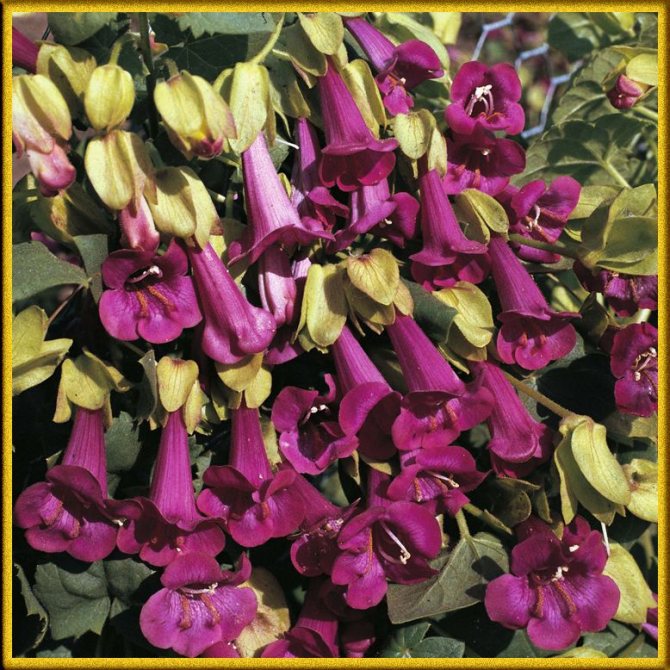

Azarina will delight for a long time with flowering with full care
Blooming vines are tied up on hedges, fixed against the walls. Beautiful buds are loved by bees and other insects. Muarandia (asarina) will be an excellent choice for decorating any site.
Azarina: video
Decorating a personal plot, terraces, open gazebos and summer kitchens is unthinkable without the use of a variety of climbing and liana-like plants.
Ampel forms allow you to create hanging beauty, but fast-growing vines contribute to the formation of dense plant walls.
Azalina climbing flowers or Maurandia flowers are newcomers and are not popular ornamental crops. But this happens more out of ignorance than because of the low level of decorativeness of the flower. Therefore, it was decided to devote a separate material to the story about this beautiful element of any garden.
A lot of photos, various varieties and varieties are presented, advice is given on growing asarin from seeds in a seedling way at home. We also considered possible applications in landscape design.
Forum, reviews
From the many reviews from florist forums, we can conclude that Maurandia can and even should be planted. It is not a picky plant and is extremely tenacious. Beautiful flowers grow from unsightly thin sprouts. Some varieties take root well in an apartment. If the apartment has a glazed loggia, then it will grow well in such conditions. Therefore, if there is a desire to breed this species, make up your mind and never regret it.
Conclusion
Azarina is a beautiful flower. Loving mild warm climate, but at the same time with great desire to take root in our latitudes. With the right location and care, it will not only delight you with fast shoots, but also quickly show the desired flowers.
Tags: Azarina, growing, care
About
«Previous post
Description of the flower asarin (Maurandia) and its photo
Application in landscape design is a completely natural desire of every owner of such a plant. With the help of a fast-growing liana, you can form a dense curtain of a beautiful emerald color interspersed with bright bells of buds.
The description of the asarin flower should start with its botanical properties, dictated by its belonging to the genus of lianas.
A quick set of deciduous mass and a relatively early flowering from the moment of sowing can be used for landscaping balconies and loggias, terraces and patios.
The Maurandia flower can grow in all directions - it does not have to be an upward stem. If he is not provided with support, then they begin to grow down towards the ground. This allows it to be used as an ampelous plant with the installation of containers at the top.
The second option is ground cover cultivation using the ability to branch quickly and densely. literally 2 weeks after planting in the ground, asarina is able to completely cover an area of soil of 1 square meter. This allows you to use it in the decoration of alpine slides, rose gardens, rockeries and flower beds.
For the first time, the flower was discovered in the vast expanses of Mexico, and from there it got into the gardens of Europe. Subsequently, for a century and a half, breeders were engaged in it, selecting the specimens most attractive in terms of their botanical properties.
Thus, numerous varieties and varieties appeared at the disposal of the modern gardener.
When describing asarina, it is worthwhile to separately talk about the shape of the leaf and bud. The leaf is shaped like a heart, sometimes with jagged edges of the leaf plate. Under optimal conditions of development, the stem can reach a length of up to 5 meters during the growing season.
The buds are bell-shaped with a long central tube. They can be pink, blue, lilac, red, white. The buds are located in the form of a bunch in the axils of the leaves.
Look at the photo of climbing asarin, richly illustrated the richness of shades and forms of leaves:
Diseases and pests
The advantage of asarin is that it is mostly disease resistant, so even a novice gardener will just look after her. However, if not properly cared for, asarin can suffer from blackleg. This is a fungal disease that appears on young and weakened specimens. It manifests itself by means of blackening of the root collar, which often leads to the death of seedlings. The cause of the onset of the disease is as follows:
- dense planting;
- excessive watering;
- too early sowing;
- keeping on a cold windowsill;
- poor ventilation of the room;
- sudden changes in temperature and humidity.
Know! Blackleg practically does not attack specimens grown in peat tablets, since they are sterilized and treated with fungicides before being sold.
But if the planting is carried out, nevertheless, in the prepared substrate, then it must first be disinfected by steaming or with a solution of manganese potassium. When young plants are affected, diseased specimens are removed, and the rest are treated with chemicals. In adults, all damaged areas should be removed, and the remains should also be treated with chemicals. Like most horticultural crops, it can be attacked by aphid or spider mite colonies.
The following folk remedies will help in the fight against aphids: regular shower, infusion of marigolds, infusion of dissected hogweed, infusion of white mustard powder, from ordinary dope, tomato tops, infusion of tobacco, decoction of garlic or onion, solution of wood ash, from alcohol and soap solution, infusion bitter pepper, diluted citrus juice.
Aphids breathe through the skin, so it does not tolerate strong odors, so the following remedies will also help in the fight: cigarette smoke, pelargonium decoction, kerosene, flea drops, non-chemical preparations containing oil. It is worth remembering about the natural enemies of aphids - the ladybug and its larvae.
Know! You can attract it to the site by planting fragrant plants, for example, dill or angelica.
The appearance of a spider mite can be detrimental to vines. As a prophylaxis against pests, regular watering and spraying of leaves and inflorescences is used.This is due to the intolerance of high humidity mites. You can get rid of parasites using the same folk remedies that are used against aphids. You can also use decoctions from:
- cyclamen;
- dandelion roots;
- persian chamomile.
To safely get rid of a harmful insect, you can use natural enemies - phytoseiulus and amblyseius. These predatory insects feed on eggs and the mites themselves. You can buy them in specialized stores or on the Internet.
Of course, chemicals that are sold in any gardening store will help from both pests. Such substances are used several times, with a difference of about a week, since they do not affect insect eggs. The main thing when using them is to observe the dosage.
Growing asarina climbing from seeds at home
In nature, the plant is perennial, since several new shoots leave the root system every year. thus, an independent rejuvenation process is carried out. However, this requires a constant high soil moisture and an ambient temperature of at least 20 degrees Celsius.
In our country, it is not possible to preserve this flower in the soil in winter, since the temperature indicators do not meet the required conditions. Therefore, in the open field, the asarin climbing flower is grown as an annual.
However, if development is carried out in a container or flowerpot, then it is possible to save the plant by bringing it into a heated room until the first frost occurs.
By the way, when growing asarina climbing at home, it is a perennial plant that can develop without prejudice to its decorative effect for 10-12 years.
Consider the process of growing asarin seeds from seed in a seedling way to obtain early flowering in the open field. So, sowing seeds of asarin should be carried out in mid-February. You should not do this later than mid-March - the chance of getting active flowering decreases.
The cultivation of asarin begins with the preparation of the appropriate soil. For the potting mix, leafy earth, peat, sand and humus are useful. All these components are mixed in equal proportions.
Next, the soil should be disinfected; for this, the container can be placed in the microwave at full power for 10 minutes. Then spill with a hot solution of strong manganese. Leave for a day and then sowing can be carried out.
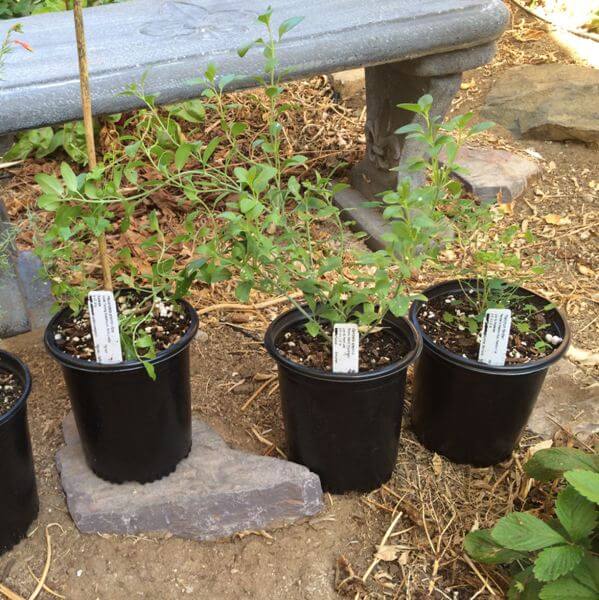

When sowing asarin seeds, they are laid out on the surface of the soil and lightly pressed. Then about 5 mm of calcined and cooled sand is poured over it. Watered and covered with glass or film on top.
At a germination temperature above 15 degrees Celsius, seedlings appear after 2 weeks. At this time, the film must be removed for 2-3 hours every day to ventilate the ground.
You can completely remove the shelter after a week.
Growing asarin seeds from seedlings requires a mandatory pick into separate peat pots. The soil for them is formed in the same way as for sowing.
The pick is carried out at the moment when the sprouts develop 2 true leaves. After that, sufficient lighting, regular watering and fertilizing with mineral fertilizers are provided.
The first feeding is carried out 10 days after the pick, for which you can use the complex fertilizer "Ideal".
The second top dressing - 2 weeks later with the complex mineral fertilizer "Agricola".
Then, when feeding, it is worth considering the condition of the plant. If the leaves are too small or pale, nitrogen is added, and with a rich color, but weak growth, it is necessary to ensure the supply of organic matter, phosphorus and potassium.
In the future, propagation of the asarin climbing flower is possible with the help of cuttings. In an adult plant, several shoots up to 20 cm long are cut out. They root perfectly in a glass container with water.
When planting in the ground, plants require at least 60 cm2 of free area for each specimen. The same rule should be taken into account when selecting containers and pots for growing on the balcony and in the apartment.
The plant is light-loving, but it must be protected from direct sunlight. Watering in hot weather daily, morning and evening. Spraying foliage with warm boiled water.
During the flowering period, fertilizers are applied with a predominant content of phosphorus and potassium at least 1 time per week. This promotes abundant and long-lasting flowering. Well, and a few more photos of asarina climbing, illustrating the external attractiveness of the plant:
Growing by seeds
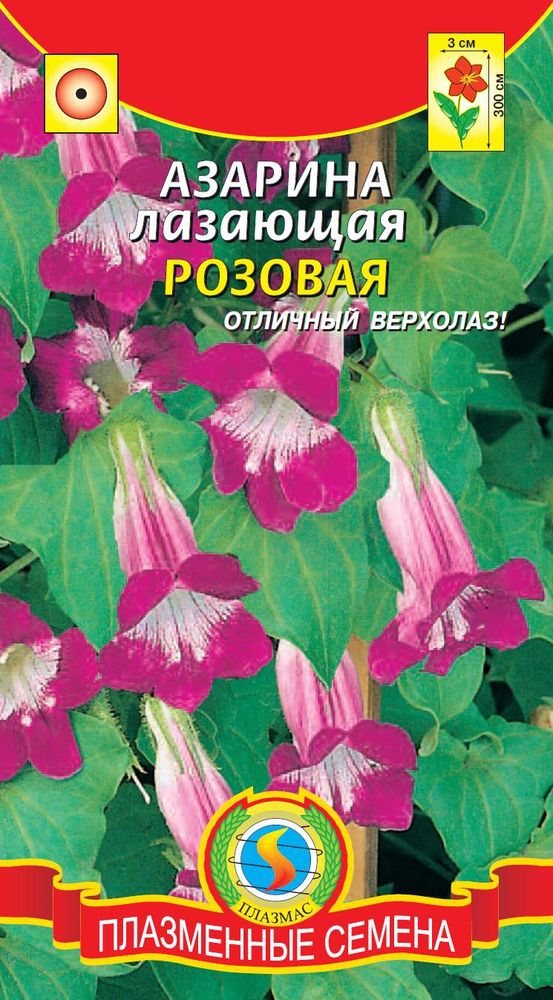

Climbing azarina "Pink" Climbing azarina "Violet"


Azarina climbing "White"
It takes about 4 months from germination to flowering of asarina climbing, and therefore, in order to admire its wonderful flowers in the middle of summer, it must be grown in seedlings. When sown in open ground, the plants will not have time to acquire the necessary decorative effect before the cold weather. The process of sowing and caring for seedlings is very simple and almost does not differ from the cultivation of other flower crops.
Sowing dates
Sowing is done in February-March, depending on the region. In order to correctly determine the seeding time, it should be borne in mind that seedlings cannot be planted in the ground until the threat of frost has passed. And overgrown plants stretch out, entwine the pot, make it difficult to transplant and adapt longer. Typically, the time between sowing seedlings and planting seedlings in open ground is about 10-12 weeks. Therefore, in the southern regions, seeds can be sown at the beginning of February, in the central zone - two weeks later, and in more northern regions, the period from 10 to 20 March is considered the optimal sowing time.


Recommendations for sowing seeds of asarina climbing
Soil preparation
Azarina can develop normally on any soil, even poor, but the more nutrients, the more luxuriant the shoots grow. The most suitable soil composition for it is a mixture of garden soil with humus and sand.
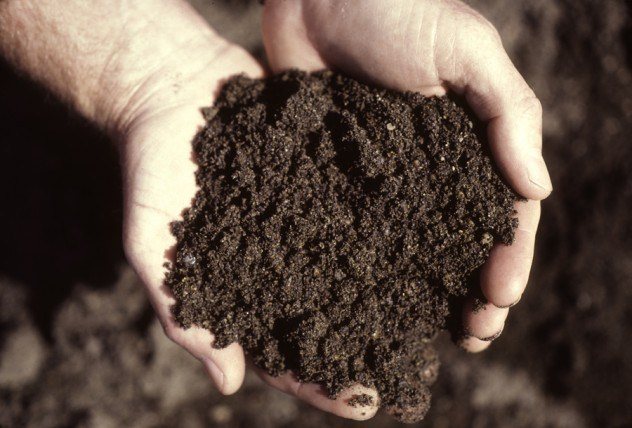

The ideal combination is a mixture of two parts sand, one part humus and garden soil.
You can also add peat for more looseness. All components are taken in equal parts, mixed and calcined in the oven for at least an hour, or spilled with a hot strong solution of potassium permanganate. A drainage layer is poured into seedling boxes or cassettes, then they are filled with prepared soil.
Sowing seeds
Typically, seeds are sown in pots without pretreatment. They are laid out on the moistened surface of the substrate and gently pressed. It is undesirable to distribute the seeds too densely, as the seedlings will be cramped and the seedlings may be injured when diving. It is not necessary to sprinkle the seeds, the main thing is to cover the boxes with glass and put them in a lighted warm place. At room temperature, seedlings appear in 10-14 days, maximum - three weeks.


Cover the container with foil or glass
If there are very few seeds, it is necessary to take peat tablets for sowing. Using tweezers, spread the seeds, one for each tablet, and sprinkle a little bit with calcined sand. It is also convenient to use dry sphagnum moss: it is crushed with scissors, moistened, laid out in small cups, after which a liana seed is placed inside the moss lump. Cups must also be covered with glass or foil until shoots appear.


Sphagnum moss - light, clean, dry
As soon as the first shoots appear, the glass begins to be removed for airing for 1-2 hours every day.
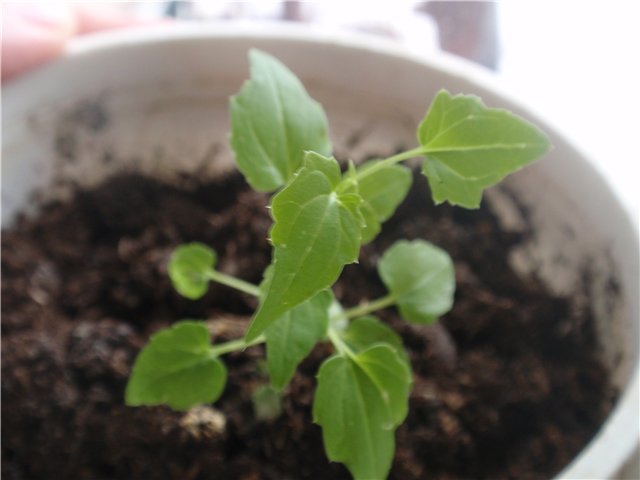

Climbing azarina - sprout
After a week, the shelter can be removed completely, and the temperature in the room can be lowered to 16-17 degrees. All this time, plants need additional lighting in the morning and evening hours, as well as during the day in cloudy weather.Watering should be the most moderate, if only the substrate does not dry out, otherwise the seedlings are affected by the black leg.
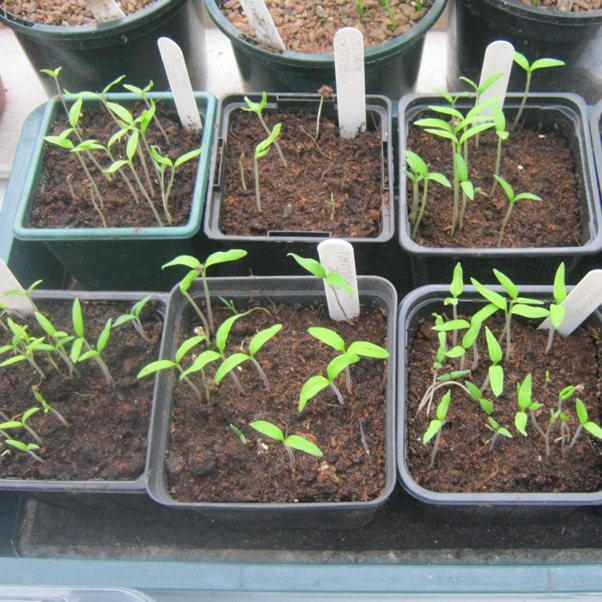

Seedlings of asarina climbing
Sometimes it happens that even after a month, the sprouts do not appear in the pots, although there is enough moisture and heat. This may indicate either the poor quality of the seeds (too old), or that they are dormant. In the second case, "shock therapy" will help: the cups are put into the refrigerator for 25-30 days, and then returned to their place. This is usually enough for the seeds to hatch and grow. Of course, this technique pushes the flowering period by more than a month, but you still have time to admire the azarina in all its glory.
Seedling picking
Azarina painfully reacts to damage to the roots when planting seedlings, adapts for a long time, and later begins to bloom. To avoid this, it is recommended to dive the seedlings into peat or paper pots, together with which the seedlings will be planted in open ground. The pots are filled with the same substrate that was used for sowing. The pick occurs in the phase of 2-3 leaves: the seedlings are watered, carefully removed from the ground with tweezers and transplanted. If moss was used for germination, the plants are transplanted with it, increasing the size of the depression in the substrate.
7-10 days after the pick, the seedlings are fed for the first time with complex fertilizer. The temperature in the room during this period should be within 20 degrees, lighting - at least 12 hours a day. When the plants rise slightly above the surface, and the leaf stalks begin to bend, you need to put a small support in each pot, for example, pieces of branches 10-15 cm long.
Advice! To make the bushes lush, with a large number of stems, after the formation of 4-5 true leaves, pinch the top of the plant.
On warm, windless days, pots with seedlings should be put outside, accustoming plants to open air. At first, 3-4 hours are enough, then leave for the whole day. Outdoors, the substrate dries very quickly, so don't forget to water it.


Seedlings of asarin climbing
Landing in open ground
With the onset of stable heat, you need to prepare a place for planting seedlings. Azarina belongs to warm and light-loving cultures, and therefore the place for it should be chosen sunny, open, protected from the wind. As a last resort, a site that is illuminated in the first half of the day is suitable. The permeability of the soil is of great importance, since the vine does not tolerate stagnant water. It develops best on light fertile loams.
Climbing azarina loves space, and in thickened plantings it withers and stops blooming. When planting seedlings, be sure to leave at least half a meter between the plants. This also applies to growing in flowerpots: for one liana, a container with a diameter of 40-50 cm and a depth of at least 30 cm is needed. After planting, the plants are watered, the soil is mulched with dry crushed grass, sawdust or peat. In the early days, while the bushes do not adapt, it is necessary to install protection over them in case of rain.
When the seedlings start growing, they make another top dressing with complex fertilizers. Further care consists in watering, loosening the soil and cleaning weeds around the bush. When the first buds appear, potash and phosphorus fertilizers are applied, and then such feeding is carried out regularly every 7 days during the flowering period.
Varieties and varieties of the flower asarin (maurandia)
The existing varieties and varieties of azarina allow you to effectively and without unnecessary hassle decorate any landscape design. Let's consider the types of Maurandia in more detail with a description of the most common and noteworthy varieties.
It is worth starting with Asarina antirrhiniflora, which belongs to the true lianas with the rapid growth of the central shoot up to one and a half meters in length.
Gives many side shoots.To stimulate them, the technique of plucking the central stem is used when it reaches a length of 1.2 meters.
The flowers are single, large, the length of the bud reaches 3 cm. All shades from white to lilac are present.
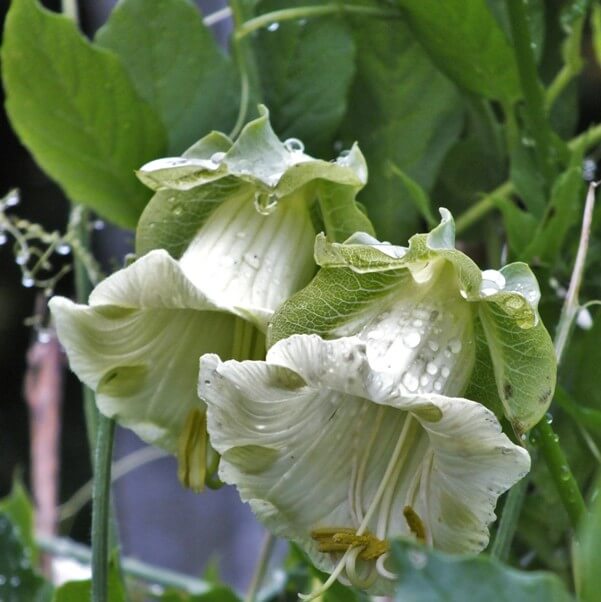

Azarina Barclay is a natural species that grows in the nature of Mexico.
Asarina barclaiana has a fantastic growth rate. In 2 months, the vine can reach a length of up to 3.5 meters.
The leaves are like ivy, without the edge, rich lettuce color. The buds reach a diameter of up to 7 cm, have a rich lilac or violet color.
Flowering is long and abundant, it stops only after the average daily air temperature drops below 8 degrees Celsius. This variety is more suitable than others for interior gardening inside the rooms of a house or apartment.
Red asarina refers to woody vines. As the stems grow, they acquire a brownish tint and are covered with dense bark. This makes the plant even more decorative.
Leaves and stems are moderately pubescent. The buds are large, mostly pink in color. Long flowering.
Asarina climbing flowers have small original leaves and fast growth. Flowering occurs 4 months after the emergence of seedlings. Buds of various colors with a diameter of no more than 4 cm.
Flowers are always beautiful, graceful, attractive, testifying to the care and maintenance of the territory from an aesthetic point of view. There are many varieties and varieties of plants, they differ, by and large, not only in appearance, but also in demand, their popularity is different. Asarina climbing belongs to the little-known, but from this, no less beautiful, in some sources you can find a second name - maurandia, which is perceived as unusual and original.
Climbing azarina belongs to the category of Lianas, has a herbaceous liana shape, has a curly branched stem. The height of the beauty can reach 4 meters, it is also impossible not to notice her small green leaves in the shape of hearts, the size of tubular flowers is up to 3 cm, has five petals. Color: deep white, yellow and two-tone - not very common, more common: blue, pale pink and violet-blue.
The plant is grown in annual culture. With regard to seed growing, this is a long process that requires patience, a little perseverance and work, but then, with the help of a flower, you can decorate many places, areas. For the winter, it is worth replanting the vine in a pot, while leaving it in a warm and well-lit room, and with the arrival of May, plant it in the open ground. It should bloom a maximum of five months after sowing. Seeds are sown in February - early March. Climbing azarina existed in the 17th century, its structure resembles a garland, and today there are 16 known species, each of which has special properties and privileges.
Azarina - varieties
This fast-growing vine is easily grown from seeds, which should only be slightly covered with soil, often self-seeding. The seeds germinate well in soil containing crushed sphagnum moss, they are sown on the surface - without covering with a substrate. Freshly harvested and ripe seeds have the best germination.
Heat-loving plant, does not tolerate frost. In extreme heat, the flowering of asarin may suffer - place it in a cooler place.
You may also be interested in:
- Tunbergia - flower photo, planting and care in open ground, growing from seeds and care at home, keeping conditions for seedlings in a pot - temperature, lighting, frequency of watering, soil for growing in pots
- Verbena - a photo of a flower, planting and care in the open field, growing seedlings, a plant in a flower bed, medicinal properties, description, content in a pot and in a pots, height
- Lobelia - flower photo, planting and care, growing seedlings, keeping in open ground, in a flower bed, on a balcony and in a pot, flowering time of a house plant, transplanting
- Kobey climbing - a photo of a flower, planting and growing from seeds in the open field, care at home, caring for seedlings, flowering time, what to feed, using a plant in landscape design, description - what a liana looks like
2.3 Light
Shading is partly necessary for plants on summer and spring days; in hot climates, asarina prefers partial shade in the afternoon.
Planting room azarins in fresh soil is carried out in the spring, using a nutritious and loose substrate that allows moisture and air to pass through well. Venting pots should have large drainage holes.
Growing creeping asarin is sometimes challenging, but the results are worth it. Grows best on sandy, organically rich, medium-moist, well-drained soils. It blooms most abundantly in the cool. Even without pinching the plant, the shoots branch abundantly.
2.6 Soil
Climbing azarina is not demanding on soil pH, this climbing plant grows well in poor soil, but with a sufficient amount of organic matter in the bud, it rises earlier. Very good drainage is required - add coarse river sand to the soil.
↑ Upward,
Top dressing with complex fertilizer in the middle of the growing season makes it possible for the plant to extend the flowering period. Maurandia responds well to banana water. Peel 1 - 2 bananas are placed in a 3-liter jar of water and infused for 3 - 4 days, and then used for watering.
2.8 when it blooms
Depending on the species, the vine can bloom at any time from late spring to late autumn. With good care, re-flowering can be achieved. With enough sunlight and periodic drying of the substrate, asarin climbing should grow and bloom throughout the season.
↑ Upward,
2.9 Spraying
There are no special requirements. This vine does not like drafts.
2.10 Watering the asarin


It is sometimes necessary to dry the soil well at the plant, otherwise rotting of the roots of asarin is possible. In autumn and winter, watering is carried out with caution, especially if the bush is kept in a cool room.
↑ Upward,
Quite rarely - in a dry atmosphere, spider mites and aphids may appear on indoor flowers.
Insects are pests
| Insect name | Signs of infection | Control measures |
| Spider mite | Subtle spider webs on the leaves, yellowing and falling foliage with extensive lesions. The surface of the sheet plates becomes dead and covered with small cracks. Plant development slows down. | Folk ways. Plants can be rinsed in the shower and left in the bathroom in a humid atmosphere for half an hour. Irradiation with an ultraviolet lamp every week for 2 minutes. Chemical preparations based on pyrethrum, sulfur powders, Fitoverm, Actellik. |
| Aphid | Sticky droplets appear on the leaf plates, the leaf plates curl up and deform, delicate buds and young leaves wither. Colonies of insects can be seen on the tops of the shoots, on the buds or on the underside of the leaf plates. The flowers of aphid-infested plants may become deformed. | Folk methods: infusion of nettle, decoction of rhubarb leaves, wormwood, soap solution, infusion of tobacco and dandelion, onions, marigolds, yarrow, tansy, dusting with dry ash. Chemicals: Sulfur powders, green mass treatment with green potash soap without getting into the ground, Decis, Aktellik, Fitoverm. |
You may also be interested in:
- Cineraria - photo, planting and care in the open field, growing seedlings, keeping as a houseplant and in a flower bed, flowering time at home, description of the plant
- Heliotrope - a photo of a flower, planting and care, reproduction - growing from seeds, flowering time at home and in the open field, a description of the flower - what it looks like, the conditions for keeping seedlings, use in perfumery, how to grow a perennial in a pot
- Morning glory - photo, planting and care in the open field, growing a flower from seeds and using seedlings, keeping as an ampel plant on the balcony, in a pot, morning glory at home
- Osteospermum - flower photo, planting and care in the open field, growing from seeds, keeping at home, planting a perennial in a flower bed and in a pot, description of the plant, variety, height of the bush, rooting of cuttings
2.12 Purpose
It is a very versatile plant. You can grow asarin in hanging baskets as a liana or ampelous plant and as an attractive ground cover, and it will also look great in vertical gardening on the balcony - its shoots will gladly braid almost any support.
We offer you to familiarize yourself with: Standard varieties of tomatoes for open ground
Hydroponics.
Kobei
Verbena
Morning glory
Cineraria
According to the color of the flower petals, the asarin varieties are classified into:
- "Bridge's White" - deep white;
- Mystic Rose - pale pink;
- Joan Loraine - violet blue;
- "Sky Blue" - blue;
- "Red dragon" - deep red-pink.
It should be noted that recently a mixture of seeds from several colors of flowers - "Satin Mix" has been very popular.
A rather unpretentious creature. It has curly branchy stems that can reach four meters or more. The size and color of the inflorescences depend on the varieties. I would like to note that among these colors there are not only specimens that tend upward, but also those that shoot on the ground. Due to their appearance, they are appreciated in landscape design.
Climbing Azarina, Asarina scandens or Asarina semperflorens, is a native of Mexico. This is the most common species of the genus Azarina, a member of the Plantain family.
In some sources, the plant can be found under the name Maurandia or Maurandia in Latin.
As the name implies, climbing asarina is a climbing liana. Under favorable conditions, its shoots can stretch up to 7 meters in length. The plant is very decorative.
It has a thick velvety heart-shaped foliage, against which tubular flowers bloom, similar to delicate "gramophone". They are small in size but very bright.
Many varieties of asarina climbing with a variety of flower colors have been bred:
- "Red dragon" - red-pink
- "Sky Blue" - bright blue
- "Mystic Rose" - pink
- "Joan Loraine" - violet-blue
- "Bridge's White" - white
Another advantage of climbing asarin is its versatility. Most often it is used for vertical gardening of arches, fences, walls, gazebos and balconies, using support.
However, if a vine is planted in a large hanging basket or on an artificial hill, it will turn into a luxurious ampelous plant. There is also a third option for using amazing asarin - ground cover growing. In two weeks, the vine is able to cover a 1 square meter plot of land with a solid carpet of greenery.
For garden decoration, Azarina is the best option. Maurandia is used as a ground cover or ampelous plant. It is decorated with loggias and balconies, used for vertical gardening.
Azarin Barclay is best suited for decorating gazebos. It grows quickly and braids a fairly large space. Due to the shade formed by this plant, there will be a shade in the gazebo in hot weather.
The subtleties of growing from seeds, disease
The most necessary condition before sowing is the preparation of land, which you can buy, or simply mix the top layer of soil with peat and sand at home.It is imperative to store seeds, if not in a greenhouse, then on a windowsill, where it will be warm and light, it is worth remembering that the most optimal temperature is not lower than +10 degrees.
The organic composition is able to improve growth, the most favorable effect is sod, leafy and humus soil with the obligatory addition of sand. The plant loves moisture, but the main thing is not to overdo it, the soil should not be excessively wet, otherwise, the roots will begin to rot.
Ideally, the seeds begin to germinate after 25 days, but the delay is not yet a reason for panic, if the flower does not show any signs of life, then you need to try to move the container (container) for a month in the refrigerator, and then put it back in the heat. If the seeds were in a dormant state, then this will contribute to their coming to life, but it should be noted that this is an exceptional case of a positive, favorable perception of the coolness of the plants.
For cultivation, it is better to use a formed container made of foil, cardboard or a peat cup, after the development of roots is formed, it will be possible to easily get rid of cardboard and foil without causing absolutely no harm, and if you use a glass, then over time the peat will decompose itself, which is a positive point, as it will contribute to additional nutrition. When the seeds sprout and the leaves ripen on them, the seedlings must be moved to pots and support the sprouts; for seedlings, the seed must be sown 10 or even 12 weeks before planting in open ground.
The main secret of rapid growth is that the seed is laid on the surface and is very lightly covered with earth, because if the layer is too heavy and dense, they will not be able to break through and germinate through, you need to expect seedlings only in a shaded, place without the slightest drafts. cut the shoots and wait until the flower takes root well, and you can transfer it to open ground only when the threat of frost is gone.
It is better to replant seedlings with moss using tweezers. If you grow asarina climbing, directly, at home, then it will develop without prejudice to its decorative effect for as long as 12 years. In addition to the seed method, asarin climbing can be propagated by cuttings (a method of artificial vegetative propagation), cuttings are taken only from flowers that have been sheltered from the cold.
Climbing azarina is very hardy and resistant to all kinds of diseases, the most dirty pest for vines is aphids, if it appears, then you need to spray it with various medicines or infusion of onions, needles, garlic.
From the defeat of the "black leg", a solution of potassium permanganate, copper sulfate is also used, after getting rid of damaged shoots. If there is a large infestation of insects, the plants should be treated with an insecticide (a chemical used to kill insects). For the growth of seeds, it is necessary to check their condition and quality, eliminate all factors that not only prevent them from blooming, but also lead to death. In fact, it can be said that growing this flower is similar to caring for others.
Planting asarin in open ground
For asarina climbing during cultivation, reverse frosts, cold soil are terrible. Choose well-lit areas that are closed on the north side.
When to plant
Climbing houseplants and hanging vines
Seedlings are transferred to open ground when the ground warms up to 10 degrees. Before this, the shoots are hardened - taken out to a cool place for several hours.
How to plant
The recommended interval for planting is 60 cm. It is worth noting that varietal asarin, whose vines do not twist too intensively, needs support or a garter.
Note! Liana is also planted in pots, hung on the edges of the gazebo. In this form, the plant is brought into apartments for the winter, and in the spring it is used again for decoration.
Origin, interesting facts, care and advantages of growing
For the first time flowers were discovered in Mexico, a little later - they became widespread in the USA and Europe. For a long time, breeders have been selecting specimens that are most attractive in terms of their botanical properties. Azarin, with the help of the stem-shaped part of the leaves, clings to any support, therefore it is often used to decorate fences, windows, arbors.
Maurandia is not a popular culture because of ignorance, and not because of a low level of decorativeness. An interesting fact is that, according to some information, asarin belongs to the plantain family, while, having no similarities with the plantain itself, but most obviously, the vine, nevertheless, belongs to the Norichnikov family. Caring for it does not require a lot of time, it consists in elementary actions: regular tie-up of stems, removal of weeds and loosening of the soil, sanitary pruning, as well as protection from pests, feeding with nitrogen fertilizer during the growth period, moderate watering.
The main advantages of cultivation: they tolerate heat well, bloom from late spring to early autumn, the foliage is lush, thus, the flower looks attractive, requires frequent watering only in dry times, mixing a mixture of seeds of different colors can get different colors. Azarina is a unique plant, it can serve not only as a decoration in the summer period, decoration in winter, but also covers unsightly buildings, fences, window openings, garden arches.
The topic of the article below is asarina climbing, growing from seeds and aftercare.
One of the most popular landscape design techniques is the use of climbing plants in vertical gardening. With their help, you can very profitably decorate unsightly outbuildings and blank walls.
The choice of vines for vertical gardening is quite large - these are various types of morning glory, climbing peas, and a number of others. But now we will take a closer look at such a plant as climbing asarin.
Description and varieties
There are about 80 species in the genus Kokhia. Only some species can be planted on the territory of Russia:
- Coronal.
This plant is distinguished by its unpretentious care and drought tolerance. The bushes of the crown cochia are spherical. In autumn, the plant takes on a red-burgundy color. The peculiarity of the culture is that it is able to withstand even slight frosts, so you can enjoy the external beauty of the bush even in late autumn. But how it happens, this article will help you understand.Kokhia Venechnaya
- Hairy
... This bush is distinguished by its slenderness and up to 1 m in height. Its leaves are narrow and downward. Their color is light green, but in the fall they acquire a burgundy color. It is necessary to plant the plant in areas where the sun is present. In this case, the soil can be depleted. How the planting and leaving of Iberis evergreen takes place, and how this plant looks in the photo, can be seen in thisHairy
- Kohia Childs
... Bushes are compact and spherical. Their height reaches 50 cm. They are covered with green foliage, which does not change color throughout the year. But how beautiful it looks will help to understand the photo and information from this article.
In addition to the presented types of kochia, breeders today were able to breed some varieties of ornamental plants:
- Sultan.
The culture forms slender bushes 70-100 cm high. Leaves can change their color throughout the year, becoming burgundy. The variety tolerates a haircut well.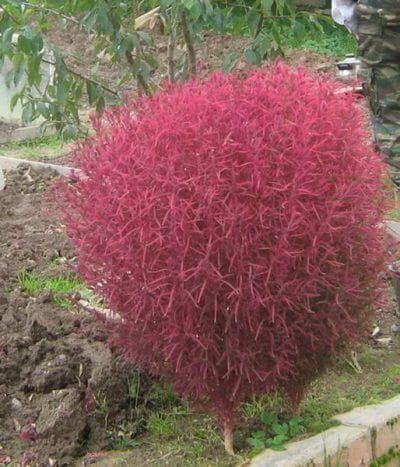

- Acapulco Silver
... The bushes are spherical in shape, and the twigs are covered with green leaves, along the edges of which are silvery edging. With the onset of autumn, they change their color to crimson. But how it happens is described in great detail here in the article. - Nephritis.
This plant is distinguished by its rapid growth. Its height can reach 1 m. It is worth using the variety to create green sculptures. - Flame
... An annual plant that takes on a columnar shape as it grows.Its height reaches 80-100 cm. In autumn, the leaves change their green color to crimson. The variety is resistant to minor frosts, but how it is grown from the seeds of Scabiosa annual can be seen in this - Shilzy
... Bushes have dense foliage. Crown height reaches 1 m. Green leaves begin to change their color to purple-red in summer.
Botanical description
Climbing azarina is a flowering liana from the Norichnikovye family.
It is characterized by thin, highly branched stems and heart-shaped leaves.
With good care, its height can be up to 7 meters.
The homeland of this plant is Mexico. The flowers of the asarin are tubular and consist of five separate petals. The flowering period lasts from mid June to late September.
Interesting to know
: The second least common name for asarin is maurandia.
Due to its low winter hardiness in Russia, this crop can only be grown as an annual plant.
Reproduction
Proceeding from the fact that Azarin in our latitudes is grown as an annual plant, growers often choose the seed method of reproduction. It is convenient, simple and effective, because its seeds are able to maintain germination for several years.
But, if Azarina is grown in a greenhouse or indoors, a two-year development cycle can be observed. In addition, a vegetative propagation method is available - from overwintered bushes indoors, cuttings are cut and rooted in prepared, moist soil.
In addition to the seed method, climbing azarin can be propagated by cuttings. In the spring, suitable cuttings are cut from the bush left for wintering and rooted in a peat-sand mixture.
With the appearance of roots, young plants are transplanted into separate pots, and with the establishment of warm weather, they are moved to open ground. Peat tablets can be used instead of pots, which makes replanting easier for young plants.
Growing conditions
Azarina is a light and heat-loving southern culture.
Therefore, places with protection from cold northerly winds are very suitable for planting it.
For example, asarina will feel very good from the south side of the house or some other building.
Note:
asarina grows very quickly, so the support for it must be prepared before the seedlings are planted.
This culture prefers loamy soils with a neutral reaction. The soil must be air permeable and well drained.
Planting and leaving
Azarina is planted in an open, windless place. It's good if the leaves are shaded at noon. You should also take care of the support for the vines in advance. The plant prefers loose, fertile soil. The best soil for it will be a mixture of the following components:
- leafy land;
- sod land;
- leaf humus;
- peat;
- coarse sand.
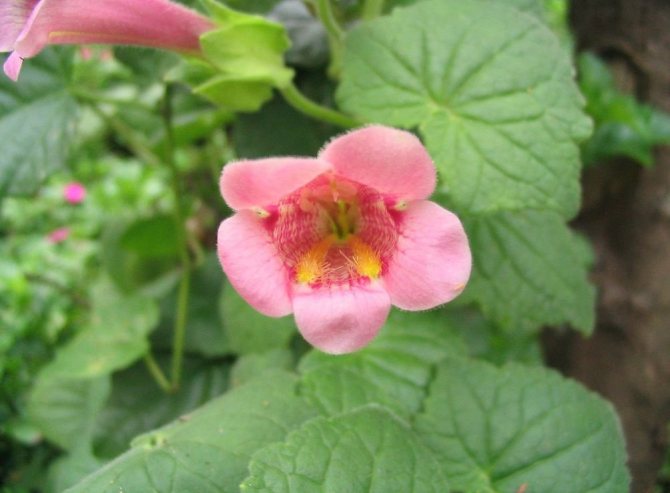

You need to plant plants with a distance of 30-50 cm, as they love space. In too thick plantings, a black leg develops faster (bacterial or fungal plant disease). After planting, the surface of the soil is mulched with peat or dry chopped grass.
Caring for asarina is simple, it comes down to crown formation and regular watering. As they grow, the stems must be guided and tied along the support. To get a beautiful ampelous shape, you must first prop up the vine to a height of 60 cm, and then remove the support and spread the shoots evenly along the sides of the pot. The depth of the container for planting must be at least 20 cm.
Watering asarin needs moderate. It tolerates droughts well, but is quickly attacked by root rot. Between waterings, the soil surface should dry out by 5-7 cm. On dry days, flowers are watered more often, it also does not hurt to spray the entire crown with water.


In order for the green mass to grow faster and the flowering to be abundant, regular feeding is necessary. Fertilizers are applied every week.It is recommended to alternate organic and mineral supplements. From organic matter, a solution of chicken manure is used. The following are used as mineral fertilizers:
- nitrogenous - during the growing season;
- phosphoric - during the formation of buds and flowering.
Outdoor wintering is possible only in the southernmost regions. In central Russia, for the cold season, the vine is brought into the room. Insulated balconies and loggias are suitable. It is important to provide good lighting. Azarina can withstand rather low temperatures: + 10 ... + 15 ° C. But the proximity of heating devices is destructive for her due to low humidity. To humidify the air, it is recommended to use a pallet with wet expanded clay or pebbles.
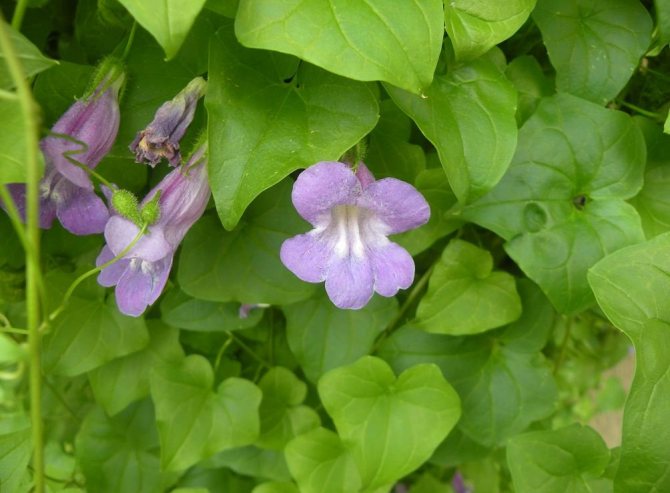

The most common ailments for asarina are blackleg and other fungal diseases. They can even infect young seedlings. As a preventive measure, the soil and shoots are treated with diluted potassium permanganate or a solution of "Copper sulfate".
In hot summer, aphids settle on the succulent crown. You can fight insects with broths of tansy and onion husks. Chemical insecticides are also permitted.
Growing from seeds
Heat-loving asarina does not have time to fully develop when sowing seeds in the ground. Therefore, it is grown through seedlings.
For this, in February or early March, a loose and sufficiently fertile soil is prepared. For example, for these purposes, you can use a universal substrate for growing flower plants.
To create a greenhouse effect, the sowing containers are additionally covered with plastic wrap from above. If the conditions are met, the first shoots begin to appear after 2 weeks.
Gardener's comment
: asarina seeds are small enough, so they are not embedded in the soil. And evenly distributed over its surface. And if necessary, they are lightly sprinkled with clean river sand.
After the second pair of true leaves appears on the seedlings, it begins to pick them into separate containers. To plant seedlings in open ground, they begin after the establishment of stable warm weather.
Caring for a flower in the garden
The flower responds well to loosening, complex feeding. They are carried out at two-week intervals throughout the entire cultivation. Regularly you need to weed the ground, free from weeds.
Important! Moisture is retained by mulching the soil with peat or humus after watering.
How to water a plant
Liana loves water, buds and leaves, with insufficient watering, quickly droop. In dry weather, the plant is moistened early in the morning by sprinkling.


The stalk of the azarina you like can be separated from the plant growing in the garden, grown in a pot as an indoor flower for up to 10 years
Reproduction
You can save your favorite look without seeds, the plant propagates by cuttings. They are taken from wintering vines at the end of February, rooted within a month. Flowers on such seedlings appear in June.
The most common varieties
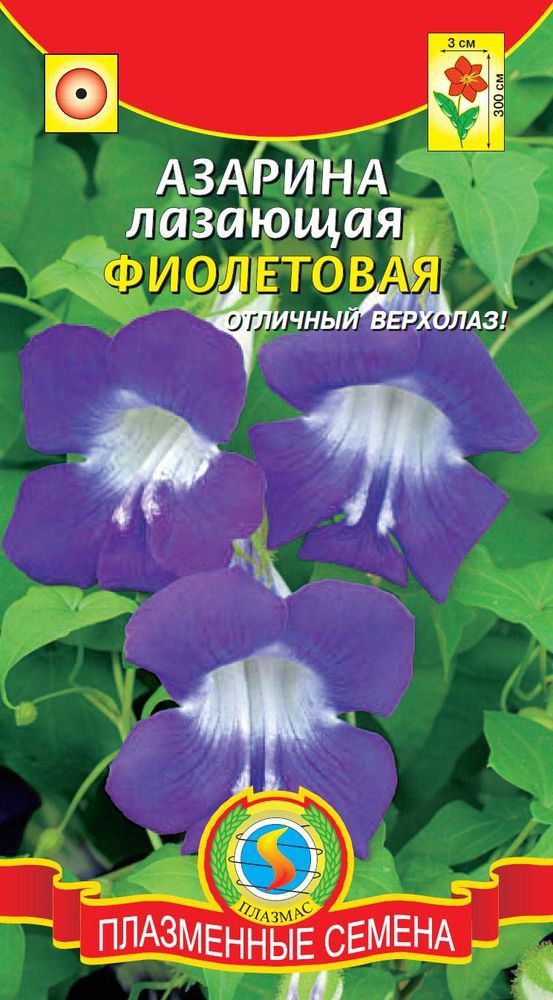

Currently, the following varieties of asarin can be found on the seed market:
- Bridge's White. This variety is characterized by deep white flowers.
- Mystic Rose. A distinctive feature of the delicate pink flowers.
- Red dragon. As the name implies, the flowers of this variety are rich in red.
- Joan Loraine. The flowers are blue with a slight purple tint.
- Sky Blue. Deep blue flowers.
If we consider the species composition of this culture, then the following types of asarin are most common:
- Antirrino-flowered. Differs in fast growth rates and long flowering period.
- Barclay. It is characterized by large bell-shaped flowers.
- Climbing. The most common in the culture of asarin.
- Spread out. This species has small flowers, but it can tolerate small frosts.
- Wislicena. It has rather large flowers.
- Purpusa. It branches well, therefore it can be used as an ampelous plant.
It's important to know:
none of the above types of asarin will be able to survive the winter.Asarina alone, stretched out when creating additional shelter, is able to survive severe frosts.
Growing asarin on your site is not difficult at all. The main thing is to find a suitable place for her and provide appropriate care.
How asarina grows, see the following video:
Sowing seedlings.
For the emergence of early shoots and flowering, seeds are planted for seedlings in early February. But in this case, it is desirable to highlight the container. To get a good result, it is worth following the technology:
- For planting, prepare deep boxes, at least 30 centimeters deep.
- Fill containers with drainage and loose soil, prepare small holes for seeds.
- Place the grains in the prepared indentations and sprinkle them with a little earth, no more than one centimeter.
- Cover the boxes with future seedlings with foil or glass.
- Remove the shelter from time to time to ventilate.
- It is also worth creating all the necessary conditions. The room temperature should be kept at around 20 degrees Celsius, then the sprouts can be expected in about seven days.
Priming
Soil composition is not an essential component when planting asarin seeds. But in more nutritious, nutritious lands, asarina will do better. The scourge will be thicker and the foliage will be more luxuriant.
The best composition is a combination of humus and garden soil with the addition of sand.
The ideal combination is when there is twice as much sand as humus and leafy soil, which are taken equally. The substrate is disinfected with a hot, bright pink solution of potassium permanganate. Drainage is laid out in containers for planting, and the prepared soil mixture is placed on top.
Plant characteristic
The plant has highly branching shoots. It is worth noting that asarina grows at an incredible speed and the small thin sprouts that appear after pecking seeds should not frighten, asarina can surprise. The liana blooms all summer and even the first frosts do not interfere with it.
The shoots are woven along the support, the leaf plates are medium-sized, bright green, can be velvety or smooth, the edges are jagged or straight, depending on the variety. Flowers are tubular, solitary, growing along the entire length of the shoot. The color of flowers is widespread pink, lilac, red and purple, less often white or yellow. Bicolor asarin is even rarer. At the end of flowering, a fruit is formed with seeds in the form of a small box.
Disputes about the belonging of the plant to the plantain and norichnik family are still ongoing. Given the great decorativeness and beauty of the plant, the simplicity and unpretentiousness in growing, you should not go into these nuances, but simply plant and enjoy azarina on your site.
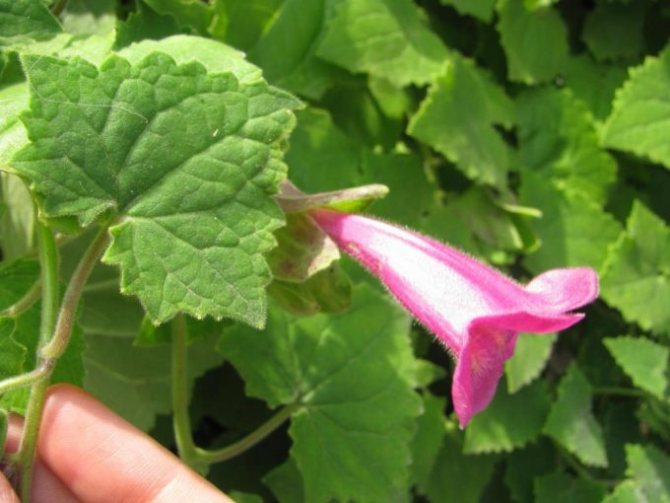

How to sow correctly
Sowing seeds is carried out in peat pots without a preparatory processing procedure. They are not scattered thickly on wet soil, and then only slightly pressed down, without falling asleep with soil.
After that, a greenhouse is built for them and placed in a sunny place. Usually sprouts appear in ten days.
But sometimes the seedlings did not hatch even after three weeks. Do not despair if the seeds did not germinate on time. In such cases, experienced gardeners are advised to apply shock therapy - exposure to cold.


Containers with seedlings are placed in the refrigerator for three weeks, and then they just continue to germinate in the warmth. If the seeds "slept", then such a technique is able to awaken them. This method will slow down the growing season of the plant for a whole month, but there will still be an opportunity to see the beauty of asarin flowering.
After the emergence of shoots, the shelter is removed for a couple of hours a day to ventilate the greenhouse.
In the second week of development, the shelter is removed, and the temperature regime is reduced by a couple of degrees. If the daylight hours are still short, then the seedlings need additional lighting.
It is necessary to water the seedlings very, very moderately, there is a high risk of a black leg.
When to sow seeds
To correctly determine the time of sowing seeds, it is necessary to take into account some of the developmental features of this vine. Firstly: it does not tolerate frost, therefore, it is necessary to categorically exclude any threat of night freezing of the soil.
But leaving a vine in a pot for a long time is also not very desirable. The scourges will begin to stretch, they will entwine the container, the transplant will be very difficult, and further adaptation will be much more difficult.
For azarina, the growing season for seedling development before planting in the garden is about three months. Based on this, you can calculate the time of sowing seeds for seedlings. In warmer climatic regions, the process can be started from the first days of February, in the Moscow region - 2-3 weeks later, and in colder ones - from mid-March.
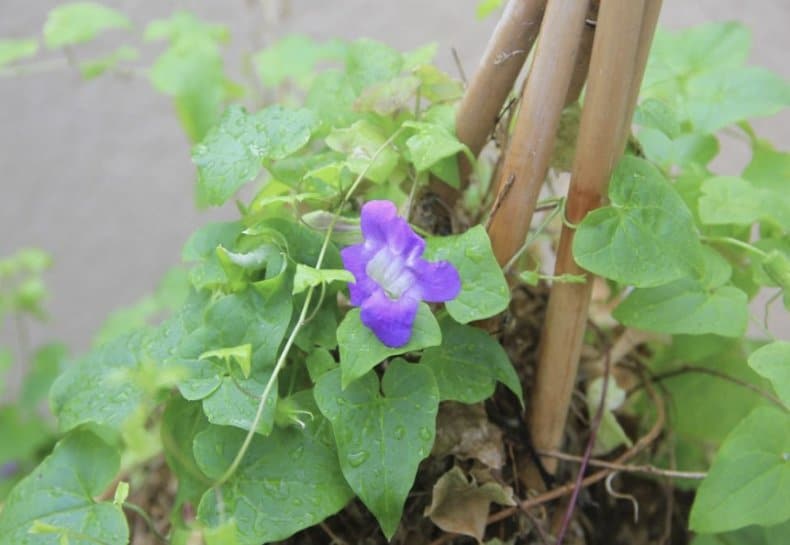

Azarina grows well in flower pots.
When planted in March, it can bloom in mid-June and bloom until frost. Just when planting, do not forget to add hydrogel to the pots and feed the plants regularly. All flowers grown in pots require much more attention than those growing in soil.
Asarin leaves are small, but very interesting, like hearts with jagged edges.
Somewhere in June, the first buds appeared, there were four of them. Whether it was a lot or a little, I didn’t know, but I was still happy about the successful experiment. The flowers were bell-shaped, slightly corrugated, snow-white. Only now, barely blooming, they wilted - apparently, I missed watering. By the way, during flowering asarin generally becomes very demanding. I watered it daily, and on especially hot days even twice - in the morning and in the evening. I did not feed the flower then, because I recently transplanted it, and I took water for irrigation from the aquarium. Soon, Azarina threw away just a huge number of buds. I looked at them with bated breath, afraid that she would throw off half. But literally from every groove a bell was visible. Each flower lasted from three to five days. I removed the flowerpot from the window behind a tulle curtain - from the direct sun, the plant drooped even with increased watering.
Despite the tightness (the roots soon mastered the entire space of the pot), I was afraid to replant it. It just became less, but water more often. My beauty bloomed in mid-June, bloomed throughout July and August.
She bloomed generously throughout September, she even tied boxes with seeds (I left two out of six boxes).
In October, the flowering stopped immediately. I was thinking about leaving the asarin for the winter, I considered different options. At first I wanted to leave the house in a cool room with hibiscus and kobei. Then she decided to cut her hair and put it in the basement to fuchsias and zephyrants myself. But the greens began to fade quickly, and I decided that in the spring I would start all over again.
But now I know one thing for sure - I will always have azarina, especially since I have already found the seeds of the variety with pink and purple flowers. I want to sow them in one pot - I can imagine how great it will look.
| 1. Growing temperature : throughout the year can be grown at a temperature of 18 - 24 ° C. |
| 2. Lighting : Light shade from direct sunlight during daytime. |
| 3. Watering and humidity : regular and abundant watering with dry topsoil. |
| 4. Pruning, cultivation features : Formative, long stems of the plant need support. |
| 5. Priming : must have excellent drainage, with sufficient nutrient content. |
| 6. Top dressing : in the warm season, they are regularly fed with mineral fertilizers. |
| 7. Reproduction : stem cuttings or seeds. |
Botanical name:
Asarina, Maurandya.
Family
... Norichnikovye.
Origin
... Southern Europe.
Description.
Azarina is an easy-to-grow evergreen vine that blooms throughout the summer. Shoots are thin and very fragile in appearance, the buds are covered with sparse pubescence. Maurandia flowers are axillary, large, 3 - 6 cm in diameter, funnel-shaped with 5 petals, hanging down. The funnel of the flower is pale.The color spectrum of the plant's flowers ranges from pink, blue, lavender to white. The leaves are small, emerald green, spear-shaped or heart-like. Easily climbs the support with the help of long leaf stalks that twine around it.
Height
... The plant is up to 3.5 meters long and develops quickly.
Types, varieties
The most popular colors that can be found on sale are white, pink and purple. In nature, there are about fifteen varieties of asarin, but the most common among them are:
- Antirrino-flowering is a fast-growing species, in a short time it reaches 1.5 meters in length. The buds are not so large. Has a variety of colors.
- Barclay - Mexican, differs from others in the rapid growth of the main stem. In a very short time, the vine grows up to three and a half meters. It has large buds of purple hues. Blooms profusely, until frost. Suitable for keeping at home.
- Reddish - long flowering, large inflorescences. Over time, the stems of this variety turn brown and acquire a kind of bark.
- Prostrate is an extremely thermophilic variety. Homeland is Spain and southwest France. In colder regions it freezes out in winter. It can overwinter in a greenhouse at a slight subzero temperature.
- Climbing is the most popular variety in Russia. Originally from a warm country - Mexico. Branches well, grows 3.5 meters, or even more. Able to cling to any surface next to which it is located. Has various coloring. Appeared in culture at the end of the eighteenth century.


Main conclusions
- Climbing azarina is a liana that can be grown as both an annual and a perennial plant.
- The plant should be grown from seeds in a seedling way, taking into account the climatic features of the region.
- It is better to germinate seeds in peat containers due to problems with delicate roots.
- Liana can grow in almost any soil, but responds to good conditions with lush growth and flowering.
- The flower requires space when growing, otherwise it can stop blooming and wither.
- For growth, a liana needs support.
- Caring for the asarin bush is standard, it is very unpretentious and resistant to diseases.
Winter storage
To transfer the vine to winter storage, a number of measures should be taken:
- Leave the length of the vine about 60 cm, cut off all weak and non-viable stems;
- Dig in the plant carefully and transplant it with the lump into a prepared container.
The best time for transplanting is mid-October, drainage must be placed on the bottom of the pot and garden soil is added to shelter all the roots. Do not forget to water the plant abundantly, and it should be removed in a lighted place away from heat sources. But how the care and transplantation of the Orchid takes place can be found in this article.
You can also wait out the winter in the apartment, the vine is transplanted using the same method. True, the leaves will not be as large as in outdoor conditions, but nevertheless it will be able to overwinter and successfully move in the spring to fresh air.
How to care
For the plant to grow comfortably upward, you guessed it, it needs support. But you can also use a mesh with large cells - it is able to withstand even a large plant, because its green masses are not so heavy.
If direct sunlight falls in the summer heat, burns may also form, so during this period it is better to organize light shading. In the heat, the plant should be watered 2 times a day - in the morning and in the evening, and the leaves should be watered from a spray bottle with warm water. But whether it is possible to use a drainage pump for irrigation is indicated here. Do not forget about pruning - thickening can provoke viral diseases of both the leaf and the entire stem, here you can forget about flowers.
The plant itself can withstand many known diseases, but it cannot get rid of aphids on its own - it needs help.The best way to cope with the misfortune is a tincture of ordinary garlic or onion peel, you can simply boil them with boiling water and let it brew.
Varieties and types
Climbing azarina is the most common type with leaves curling around everything it touches. Its curly branched shoot reaches a height of 3-3.5 meters. Small foliage has a dark green color, and tubular flowers, the length of which exceeds 3 cm, are inherent in white, pink and other colors (depending on the variety).
Azarina reddish grows 3 meters in height, while the lower parts of the stems become lignified. The leaves have a triangular or heart-shaped shape, with irregular marginal denticles and pubescence, like the stems. The shape of the flowers is wide-tubular, they are extended by 5-7 cm.
The white color of the tubes themselves is complemented by pink at the bends. This asarina really likes the high degree of humidity, and even having provided her with such an environment, it is recommended to additionally organize light shading.
Azarina antirrino-flowered - somewhat less tall - up to 1.2-1.5 meters on average (there is information about 2.5-meter specimens). With strongly branching stems, it clings to objects with the help of curling angular-cordate, not pubescent leaves.
The flowers are characterized by a tubular-bell-shaped shape and a length of 1.5-3 cm.Single (in the leaf axils) or collected in small clusters (in the upper parts of the stems), they give the appearance of red, blue, white and other colors.
Azarin Barclay is a fast-growing species, reaching a length of 3.5 meters and covering a plane width of up to 2.5 meters. Foliage without pubescence and the same shape as in the previous species.
Flowers - overall tubes of 6-7 cm in length, painted in a bright pink, purple or light purple shade (pharynx is white). The species is even more often bred as a biennial plant, both in the garden and at home.
Description
In the warm lands, where asarina comes from, it grows like a perennial vine. In colder latitudes, it is grown as an annual plant, and only sometimes left for the second year.
She has thin and long climbing stems, leaves in the form of hearts, painted in a rich green color, have a velvety structure.
If you plant the seeds early, in the very first days of spring, then in the second decade of June, asarina will bloom and will bloom almost until frost.
The flowers are tubular and composed of five petals. Their colors range from pure white to lavender and ultramarine shades. After flowering, a huge number of microscopic seeds are formed in small dry capsules.
The tendrils grow on the stalks of the vines, curling around any obstacles. Thanks to this property, the liana climbs on supports, gazebos and roofs, wrapping around benches and railings near the house.
Azarina has a not too deep root system, so it readily grows in pots. Such a bush for the winter can be transferred to the house, waiting out the winter frosts. With this approach, the life cycle of asarin can be extended up to twelve years, while maintaining all the decorativeness of the plant.


Asarina has a rather slow growing season: it blooms 120 -130 days after planting. Therefore, for middle latitudes, it is advisable to grow it with seedlings. This will give you the opportunity to see the wonderful flowering of asarinas in the summer.
The process itself is not difficult either when planting or caring for seedlings.
Features of asarin
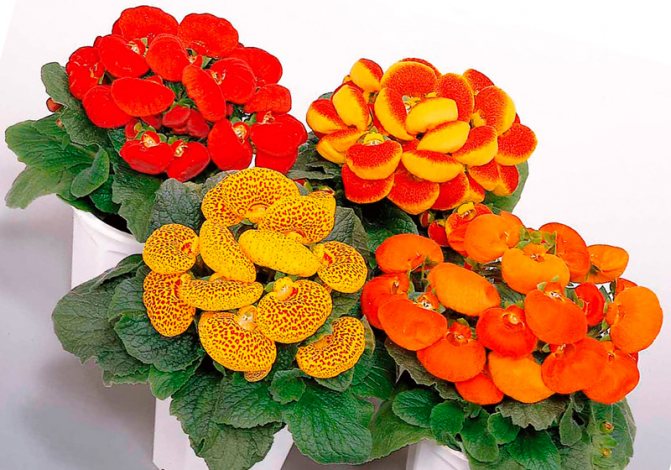

The climbing asarin has strongly branching shoots, the length of which is 3–7 meters. The shoots cling to the support thanks to the twisting thin petioles. Small bright green velvety or bare leaf plates, can be serrated or whole-edged. Their shape is rounded-triangular, the base is heart-shaped, and the apex is pointed. Tubular large axillary flowers are solitary, they are located along the entire shoot, up to its apex.The most common color of flowers is pink, purple and purple, less often they can be colored yellow or white. Plants with bicolor flowers are very rare. Asarina blooms in the last days of June, and the end of flowering falls on September. The fruit is a box, which includes 2 cells, inside them are small pointed seeds.
Testimonials
- Maria Ivanovna, 56 years old: “For the first time I saw an unusual liana at my neighbor's house, I really liked it with its unusual leaves and flowers. I got some seeds by the spring, and tried to grow my own flowers. But nothing happened the first time, I had to wait another year. But I was already smarter and asked for cuttings. I planted them in pots and moved them to the apartment. During the winter, out of 10 pieces, only 6 survived, but they also made me happy in the spring - they blossomed and got stronger in the fresh air, the bush became so voluminous! "
- Olga, 34 years old: “I just liked the packaging - the flowers are so beautiful and the foliage is extraordinary, so I bought new seeds for me.
I did everything as it is written on the package, and by the spring I had several plants. I planted a novelty in the shade of an apple tree, sheltering them from the scorching sun. My joy knew no bounds - my old apple tree probably fell in love with flowers, and gave such a harvest that I had not seen for the last 10 years. "
Types and varieties of asarinas with photos and names
Climbing Azarina (Asarina scandens = Asarina semperflorens = Usteria scandens)
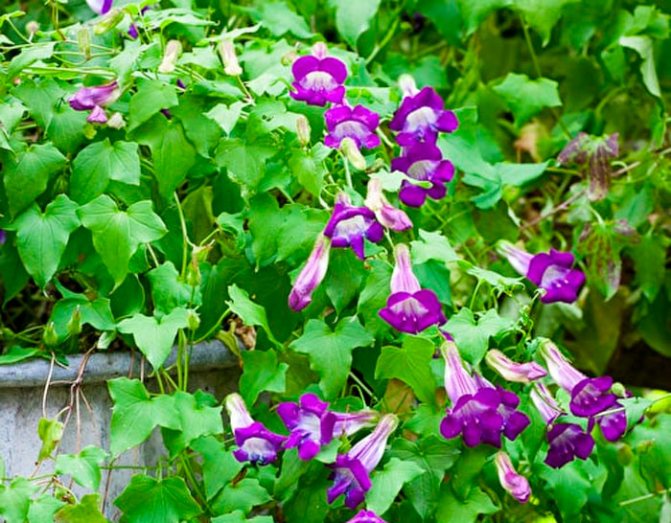

This type is most often cultivated by gardeners. Its detailed description can be found at the beginning of the article. The most popular varieties:
- Bridges White. The color of the flowers is white.
- Joan Lorraine. The flowers are dark purple.
- Mystic Rose. The color of the flowers is deep pink.
- Red Dragon. The flowers are colored scarlet or bloody red.
- Sky Blue. Flowers of medium size are colored blue.
Azarina prostrate (Asarina procumbens = Antirrhinum asarina)
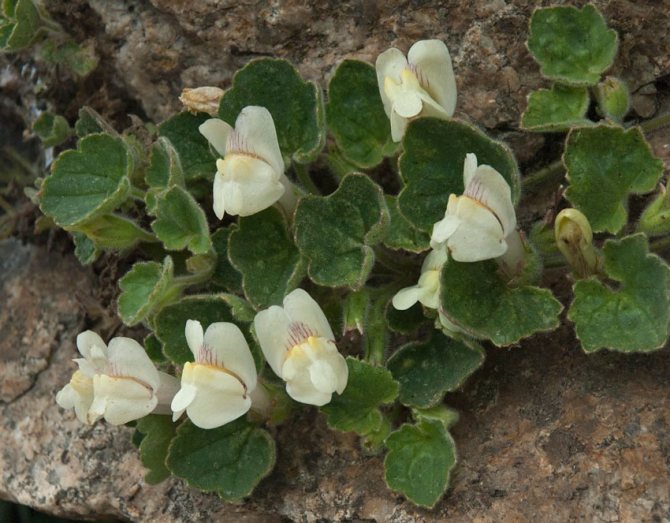

The homeland of this species is the northeastern part of Spain and the southwest of France. The most common variety of this type is the Sierra Nevada. In such a plant, horizontally spread stems are fleecy. The length of the pale green triangular leaf plates with a serrated edge is about 6 centimeters, they have long petioles, on the surface of which there is pubescence. The length of the tubular flowers is about 40 mm, their color is soft yellow. This flower is not afraid of short frosts no more than minus 15 degrees.
Azarina antirrhiniflora (Asarina antirrhiniflora)
The length of this type of stem can vary from 150 to 250 centimeters. The shape of the small leaf plates is cordate. The flowers are tubular elongated bells, reaching 30 mm in length, their color can be sky blue, pale purple, deep red or white. There are spots on the pharynx surface. The plant blooms at the beginning of the summer period, while flowering ends with frost.
Azarina Barclaiana
The homeland of such a branchy liana is Mexico. Its length is about 350 cm. Heart-shaped leaf plates have a pointed apex. The length of the bell-shaped flowers is 70 mm. Their color can be pink, crimson or lilac. The pharynx is always colored in lighter shades.
Azarina blushing (Asarina erubescens)
The length of the stems of such a creeping flower reaches 350 cm, while along the support it can rise to a height of no more than 120 cm. The length of the velvety heart-shaped leaf plates is about 8 centimeters. The flowers are about 70 mm long, they are tubular and light pink in color. There are spots on the surface of the white throat.
Azarina purpusa (Asarina purpusii)
Such a flower has many spreading thin shoots, the length of which is 0.3–0.4 m. The heart-shaped leaf plates reach 50 mm in length and have a sharp top. The shape of the flowers is funnel-shaped, the length of their tubes is 50 mm. Their color is carmine or pale purple.
Azarina wislizenii
The color of large flowers is pale purple or blue. The Red Dragon variety has deep red flowers.
Landscape design
With azarina, you can create a thick curtain or decorate the lattice wall of an open terrace. Long shoots of a plant hanging down from a balcony or loggia also look beautiful.


Asarin fencing
Asarin is often used as a ground cover plant. It is suitable as a background for floral arrangements such as rose gardens, alpine slides and flower beds.
On a note! Two weeks after planting, asarin is able to braid an area of 1 m².
Diseases
The cultivation of this vine usually does not bring any particular problems with proper care. But inexperienced flower growers should remember that aphids, its main pest, are very fond of Maurandia. For a successful fight against aphids, it must be sprayed with infused onion and garlic husks, to which pine or spruce needles are added.
Young asarin plants are sometimes still "attacked" by the black leg. This is the name of a special type of rot. The causative agents of blackleg are soil fungi. Then they cut off all the damaged parts and help healthy branches with potassium permanganate. The soil is also treated with a solution of potassium permanganate. But in general, ideally, it is better to change the soil.
Photo gallery of views
Photo
And speaking of Narilatha photos, there are not many images of this flower on the Internet.
If you search through all the resources, you can find no more than 10 photos of this rare plant.


Some say that the reason Narilatha photos are so rare is because they bloom once every 20 years. It is quite possible, especially since there is a video with this flower. Actually, there should be a lot more photos.
How and when to plant
The flowering liana has one characteristic feature - it can take up to five months from the beginning of germination to the moment of flowering, so experienced flower growers sow the seeds of asarina climbing at the beginning of February.
Sowing should begin with a thorough preparation of the soil - the earth should be loose, with a large proportion of fertile composition. It can be part of humus, river sand, peat and soil from your own garden.
Do not forget to warm the earth in the oven at high temperatures to get rid of the pathogenic microflora. But you can use purchased land, but do not forget to treat it from pests with any fungicidal preparation.
And only in a day you can start planting seeds:
- In containers filled with earth, seeds are simply scattered over the surface, and pressed a little with a special tool;
- Sand, previously calcined and cooled, is poured on top;
- Cover the container with thin glass or foil, and move it to a bright and warm place. Periodically remove the shelter for ventilation; But what arcs for a greenhouse are best used, this information will help to understand.
- After 14 days, you can wait for seedlings.
If you notice black-footed plants, remove them immediately to avoid contamination of other seedlings. The earth must again be spilled with a fungicide or potassium permanganate solution, and sprinkled with charcoal powder.
After the appearance of real leaves, we dive the seedlings into separate pots, install a support for each plant.
A little trick: in order to form more side shoots, pinch the top after 5 true leaves.
If you follow all the prescribed agricultural techniques, then the shoots will appear only at the end of 2 weeks, this time is allotted to it for stratification of the dense shell of the seed, and the ambient temperature should not fall below 18-20 degrees Celsius.
Azarina in design
Liana is a rather unpretentious plant, and it is also very decorative. Depending on the species, it is grown as a ground cover, ampelous or vertical. Looks great on balconies and loggias. Decorates gazebos and slides.
The most common place for growing asarin is fences, arches, barn walls. There are processes on the leaves of the plant, with the help of which the vine clings to the support. They are small, so the mesh diameter must be small for the plant to be comfortable. The plant grows quickly and gives a lot of shade, therefore it is indispensable for a gazebo.
Azarina is an outdoor plant, and therefore it feels much better in the sun than indoors. Despite this, growing in a room is also possible. Leaves and flowers will be slightly smaller, flowering is not as abundant and prolonged as in the open air.
Growing asarin does not require special knowledge and skills. Liana calmly refers to the heat, drying out of the soil, but prolonged inattention of the gardener can destroy the plant. It is important to admire this beauty as often as possible and control the condition of flowers and leaves. There will be practically no problems with pests. Chemicals, if necessary, can easily cope with such a problem.
Now read:
- Exquisite junkus (sitnik) spiral in the interior
- Choosing cucumbers for open ground according to your preferences
- Decoration and spicy pepper dish on the windowsill
- Confidentiality
About
Leading Researcher of the Laboratory of Vegetable and Berry Crops, Yakutsk Research Institute of Agriculture, Siberian Branch of the Russian Academy of Agricultural Sciences, Republic of Sakha (Yakutia).
What attracted this plant to gardeners?
To begin with, these are its dark green small leaves, shaped like ivy leaf blades. The stems grow up to 3-4 meters, and therefore are well suited for decorating gazebos or fences. And, of course, the main attribute of asarina is its flowers.
The funnel-shaped tubular flowers that resemble gloxinia come in a variety of colors: blue, pink, lilac, purple, and white. They also differ in size - some are not more than 1.5 cm, and there are also quite large specimens - up to 3 cm.
Also, these vines for the garden are famous for their early and long flowering period, from June to autumn frosts.
Care rules


There is nothing complicated in the agricultural technology of this flower. If you know only a few basic recommendations, then you can easily use it in decorating your site.
So, first, a little about choosing a landing site. Light and heat-loving. Therefore, choose a sunny location, sheltered from the winds. However, you should not still give the climbing asarin completely to the power of the scorching sun. Liana will not be disturbed by shading, otherwise its absence will affect its growth.
As far as soil is concerned, neutral loamy soil works well. Of course, do not forget about good drainage and the introduction of peat, humus and various mineral fertilizers into the soil.
Since asarina climbing is a climbing plant, make sure that a support is installed before planting, which, as a rule, is made of a metal coarse mesh.


Yes, and about the landing. Usually propagated by seeds, which are sown in containers at the end of winter. In this case, it is important to observe the temperature regime: the optimal indicator for germination is 15-18 ° C, and in the spring the sprouts are planted in open ground.
It also propagates by cuttings, which can be taken from shoots left to overwinter in greenhouse conditions.
Diseases and ways to deal with them
One of the main plagues that culture faces is the defeat of aphids. In the fight against these intruders, infusions of garlic, pine needles, tansy and onion peels are often used. One of the above solutions must be sprayed on the leaves and it is advisable to do this before the aphid invasion hits.
It should also be mentioned that asarin seedlings are affected by the black leg, the causative agents of which are some soil fungi. Because of this, the stalk begins to turn black, after a while it becomes thin, and then completely breaks and dies.
How to be in this case? To begin with, remove all affected shoots. Then you need to disinfect the earth: if you cannot change it, then you need to treat the soil with a solution of potassium permanganate or copper sulfate.
Application in landscape design


It has already been mentioned above why the plant is often used in decorating garden plots. Fortunately, landscape design offers many opportunities for climbing asarin. It will become a special decoration for any gazebo. It is often used as a wall carpet - dense green shoots combined with beautiful flowers will give a special look to your home.
In addition to such a large-scale use, it is also grown as an ampelous plant. Therefore, how to apply a perennial in landscape design is up to you!
Did you like the article? Vote! 11111 Rating 5.00
Seedling picking
Azarina does not like it when they carry out various manipulations with her roots. She suffers, postpones flowering until later. In order not to cause unnecessary injuries to the plant, it is better to carry out a dive into a container, with which it will be possible to plant seedlings in the garden.
The procedure should be started after the appearance of 2-3 true leaves in the seedlings. After a week, it is necessary to feed the plants with a complex of minerals.
For seedlings, the temperature should be maintained at about 20-22 degrees. During this period, twelve-hour daylight hours are very important so that the plants do not stretch out.
As soon as the seedlings begin to rise, and hooks appear on the stalks, you need to look for small supports for the bushes in the form of branches 10-20 centimeters.
To improve the appearance, to obtain greater splendor and density, pinch the top of the vine. To do this, they are waiting for 4-5 new leaves to grow.
Seedlings are gradually hardened, taking them outside for a couple of hours at first, gradually increasing the time.
Uses of asarin
This lush vine is good in the garden for decorating gazebos, fences, rabatok and other garden structures. It is also planted in flowerpots on balconies and terraces. The plant quickly grows a crown and retains bright flowers for a long time. It is suitable for camouflaging various outbuildings. The best neighbors for asarin will be lavender, sage, cereals, and shrubs with gray-blue foliage.
Asarin flowers last for a very long time, each bud lives for more than a week. However, you can admire the flowering only on living plants. It is not suitable for cutting asarin.
Azarina climbing - Mexican beauty
Azarina climbing
, Asarina scandens, or Asarina semperflorens, is a native of Mexico. This is the most common species of the genus Azarina, a member of the Plantain family.
In some sources, the plant can be found under the name Maurandia or Maurandia in Latin.
As the name suggests, asarina climbing
Is a climbing liana. Under favorable conditions, its shoots can stretch up to 7 meters in length. The plant is very decorative.
It possesses
dense, velvety, heart-shaped foliage, against the background of which tubular flowers bloom, similar to delicate "gramophone". They are small in size but very bright.
A lot of varieties of asarin climbing
with a variety of flower colors:
- "Red dragon" - red-pink
- "Sky Blue" - bright blue
- "Mystic Rose" - pink
- "Joan Loraine" - violet-blue
- "Bridge's White" - white
Another advantage climbing azarins
Is its versatility. Most often it is used for vertical gardening of arches, fences, walls, gazebos and balconies, using support.
However, if the vine to plant
into a large hanging basket or on an artificial hill, it will turn into a luxurious ampelous plant. There is also a third option for using amazing asarin - ground cover growing. In two weeks, the vine is able to cover a 1 square meter plot of land with a solid carpet of greenery.

